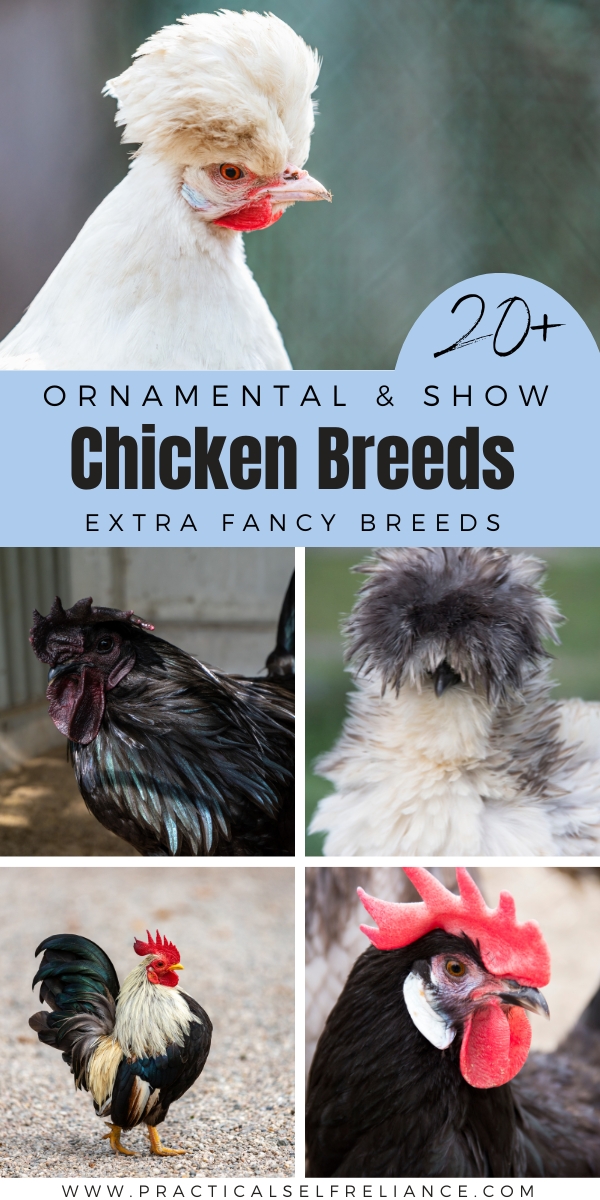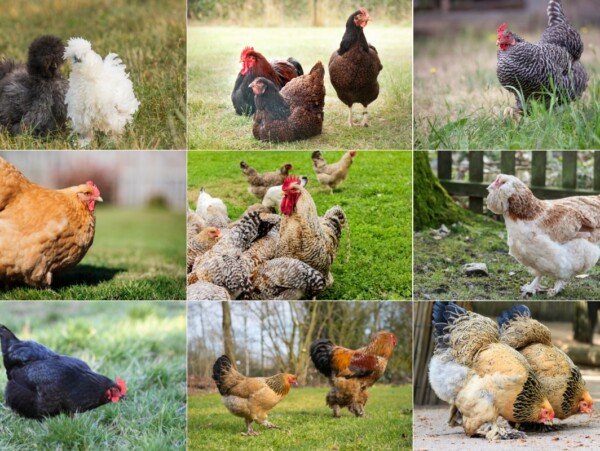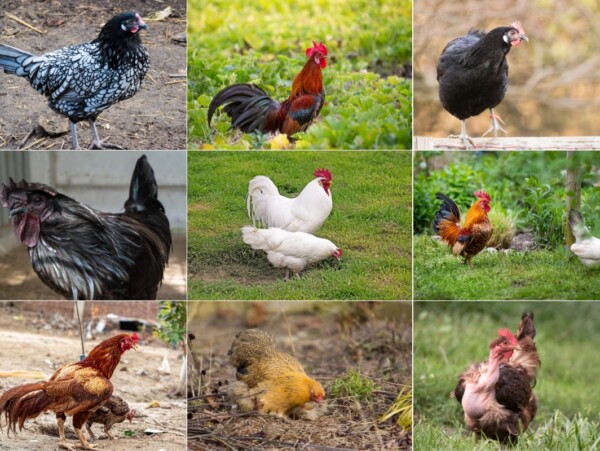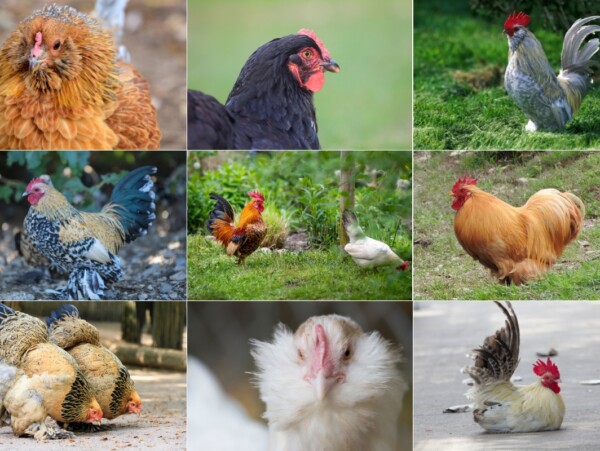Affiliate disclosure: This post may contain affiliate links. Please see our Privacy Policy.
Ornamental chicken breeds are kept all over the world for beauty, companionship, and, inevitably, a few eggs as well. These chickens are stunningly beautiful and unique, and most make great pets. Even if you don’t plan on taking your chicken to poultry shows, a few of these beauties will add interest to your backyard flock (and they’re as fun to keep as they are beautiful).
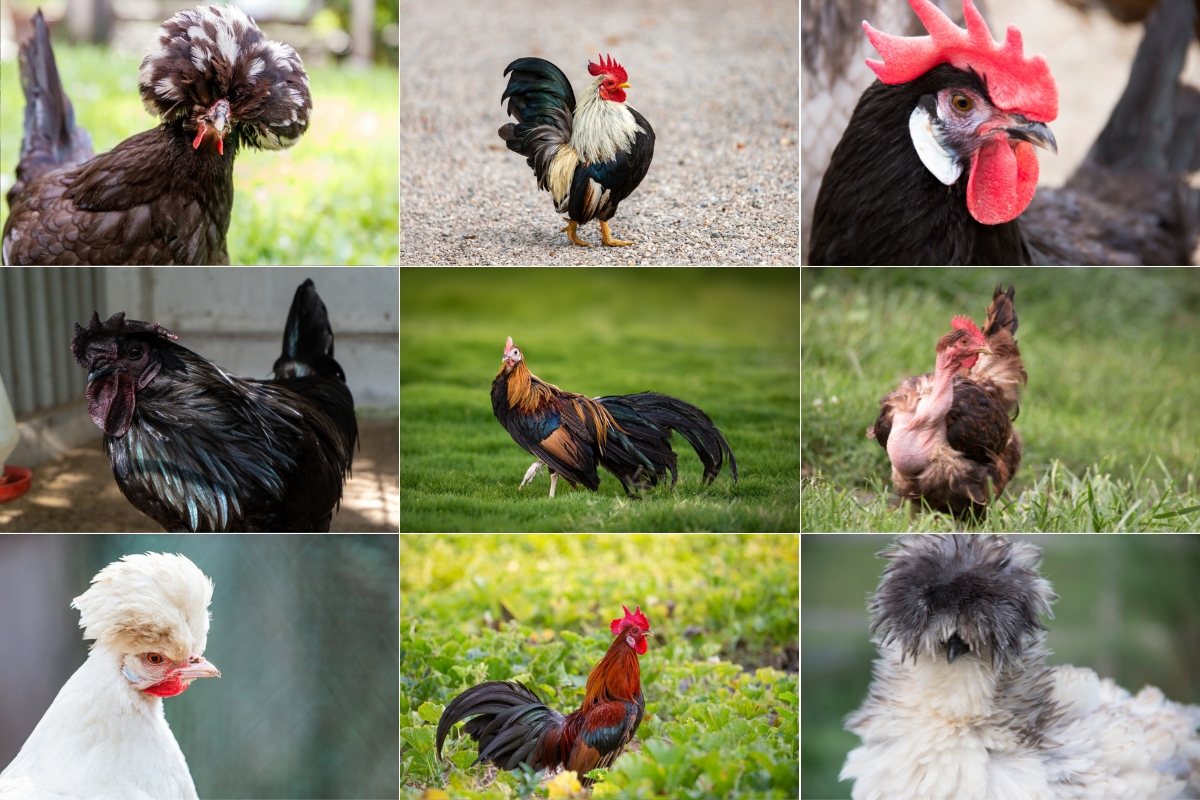
This article is written by Rea Yoh, a freelance writer who grew up in rural Illinois, raising backyard chickens. She graduated with honors in Biology and Science, Technology, and Society from Brown University, and her background in research helps her get to the heart of any question. She has a passion for animals, the environment, and sustainable living.
Each chicken is like a snowflake, so precious and special in its own way! There are some breeds that stand out a bit more than others, though, which we refer to as ornamental breeds.
An ornamental chicken is one that is kept for its unique qualities, rather than its productive value. They might sport mohawks, like Appenzeller Spitzhaubens, be perfectly plush, like Silkies, or have fabulously long cries, like the Tomaru.
You probably guessed that the most popular ornamental chickens aren’t great layers and aren’t very meaty, but they make up for that in visual appeal and personality! If you’re someone who likes pretty, majestic, or even goofy-looking chickens and want some pets that will start a conversation, this list is perfect for you.
A lot of ornamental chickens have very specific requirements in terms of care. In this article, I’ll be going over what makes each breed special, as well as the concerns that their owners might want to keep an eye out for.
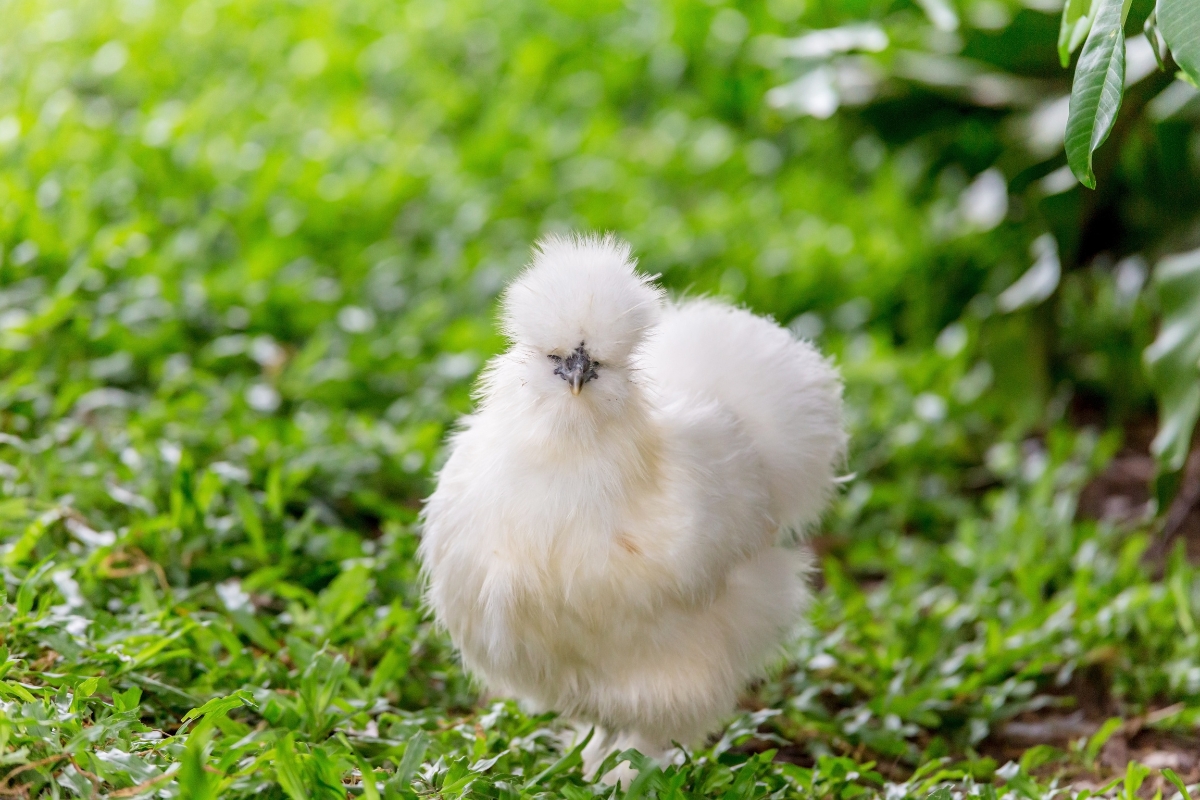
List of Ornamental Chicken Breeds
Here are twenty of the most popular breeds of ornamental chicken! I’d love to know some of your favorites, or the ones that really stand out to you!
- Aseel
- Appenzeller Spitzhauben
- Araucana
- Ayam Cemani
- Appenzeller Spitzhauben
- Ayam Cemani
- Barbu d’Anvers
- Belgian d’Uccle
- Brabanter
- Crevecoeur
- Cubalaya
- Egyptian Fayoumi
- Houdan
- Japanese Bantam
- Naked Neck
- Old English Game
- Onagadori
- Phoenix
- Polish
- Red Jungle Fowl
- Russian Orloff
- Serama
- Shamo
- Silkie
- Sicilian Buttercup
- Sultan
- Sumatra
- Thuringian
- Tomaru
- White Faced Black Spanish
- Yokohama
I’ll take you through each breed one by one!
Aseel (or Asil)
The scrappy Aseel used to be a game bird. It’s no surprise that this muscular, powerful chicken was used in Pakistan for cockfighting. Nowadays, this heritage breed is treasured for its exotic appearance. Aseels have long, snakelike necks and powerful legs. They’re about as fearsome as they look–roosters can’t be kept together, and even the hens and chicks pick fights.
Aseels also have spurs on their feet, which can be removed to keep the other members of the flock safe. Aseels are a very hardy, robust breed without many health problems. If you want an ancient breed of chicken with lots of history as the ancestors of most modern-day game birds with a magnificent frame, these are a great choice…but don’t confuse them with snuggly pets!
- Breed Name: Aseel, Asil
- Breed Type: All other, meat, ornamental, exhibition
- Size: Hens 4 lbs, roosters 5.5 lbs
- Temperament: Aggressive, confident, tough
- Eggs per year: 40
- Egg color: White, cream
- Hardiness: Cold hardy and heat tolerant
- Comb type: Pea
- Feather type: Hard, clean legs
- Lifespan: 8-10 years
- Time to Maturity: 30 weeks
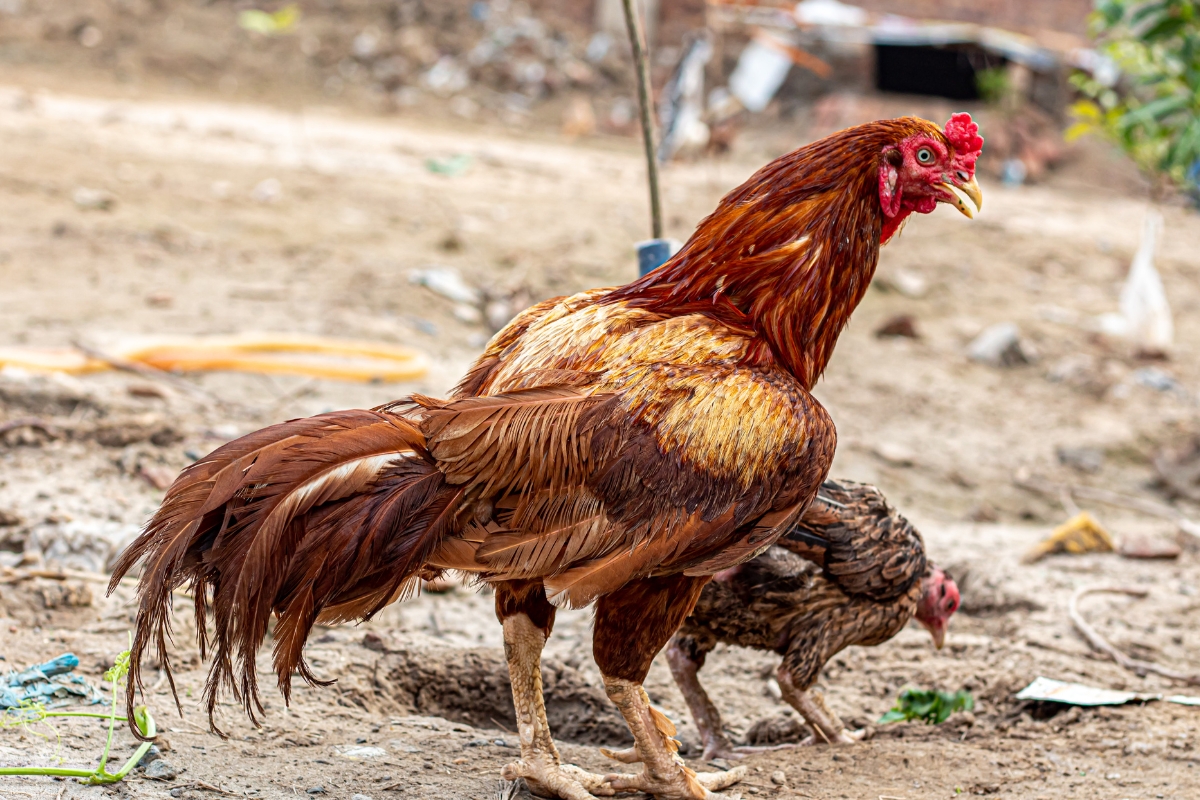
Appenzeller Spitzhauben
In Appenzellerland, Switzerland, where this breed originated, lace bonnets were all the rage in women’s fashion. The head crests of the Appenzeller Spitzhauben make it special–this pretty little chicken sports a mohawk that covers its comb. Some people liken it to Cruella deVille from 101 Dalmatians because of its distinctive spotted plumage. The silver spangled type is the most common in the US, but gold-spangled and blue also exist.
Spitzhaubens are known to be a very hardy breed, thriving in the extreme cold and tolerating heat very well. They’re also very predator-savvy and excellent foragers. Spitzhaubens are a great hands-off breed, and they value independence. They’re not very affectionate and tend to be very flighty. Marvel at them from afar!
- Breed Name: Appenzeller Spitzhauben (app-uhn-zell-urr spits-haw-ben)
- Breed Type: Layer, ornamental
- Temperament: Flighty, excited, active
- Size: Hens 3.5 lbs, roosters 4.5 lbs
- Eggs Per Year: 150-180
- Egg Size: Medium to large
- Egg Color: White or tinted
- Feather Type: Hard, clean legs
- Comb Type: V-comb
- Hardiness: Cold hardy
- Lifespan: 5+ years
- Time To Maturity: 20-22 weeks
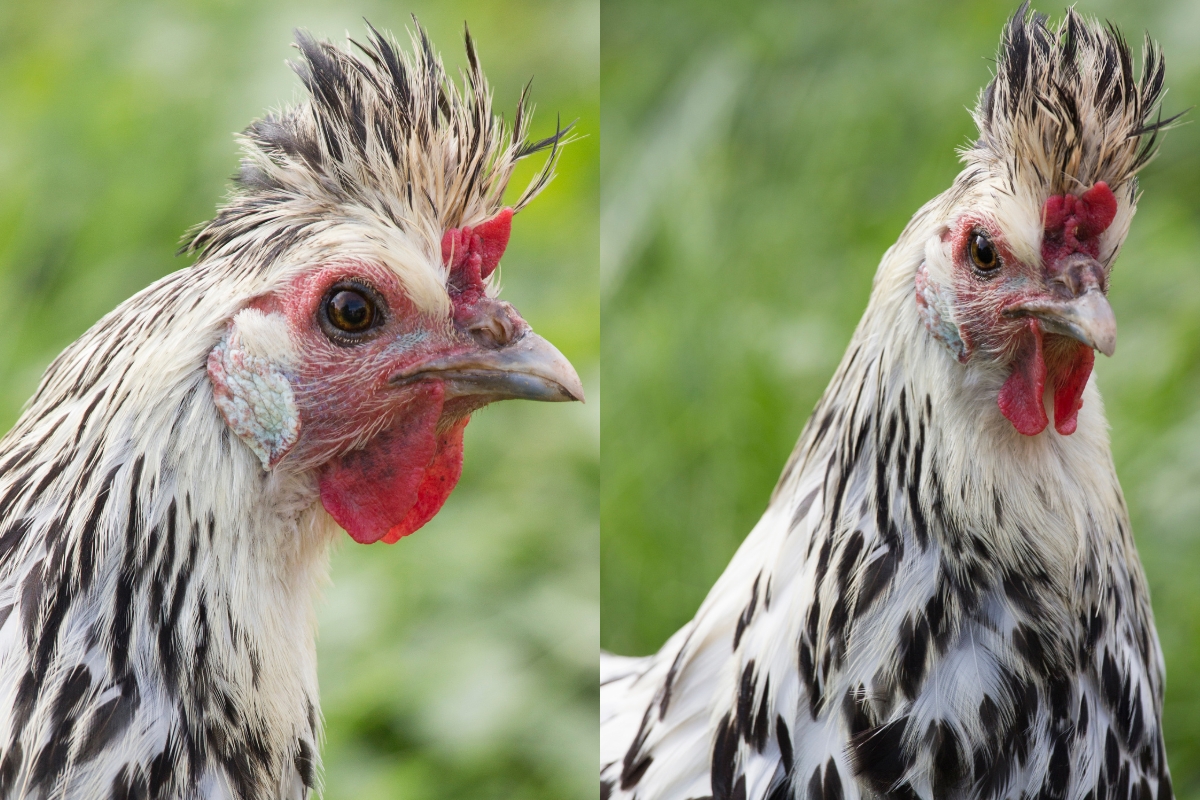
Araucana
The Araucana is a very distinct-looking chicken, best known for its ability to lay blue eggs. Araucanas were brought to the US from Chile and were used to develop other breeds of blue or green layers, like the Ameraucana and the Easter Egger.
Besides their beautiful eggs, Araucanas are fancied for their elaborate ear tufts and their lack of a tail. These desired traits are, unfortunately, a result of a lethal gene, so very few Araucanas that are both rumpless and tufted will survive to adulthood. They’ve since been crossbred, and Ameraucana Chickens are more commonly kept, as they still hae the blue egg gene but are much healthier in general.
Otherwise, Araucanas are a hardy breed that does well in heat and cold. Their personalities are a mixed bag (some are independent, others affectionate), but you can count on them to be alert and active.
- Breed Name: Araucana (ah-ruhh-caw-nuhh)
- Breed Type: Layer, ornamental
- Temperament: Active, docile, curious
- Size: Hens 5 lbs, roosters 6 lbs
- Eggs Per Year: 250
- Egg Size: Medium to large
- Egg Color: Blue
- Feather Type: Hard, clean legs with muffs and ear tufts. No tail.
- Comb Type: Pea
- Hardiness: Cold hardy and heat tolerant
- Lifespan: 8+ years
- Time To Maturity: 20-22 weeks
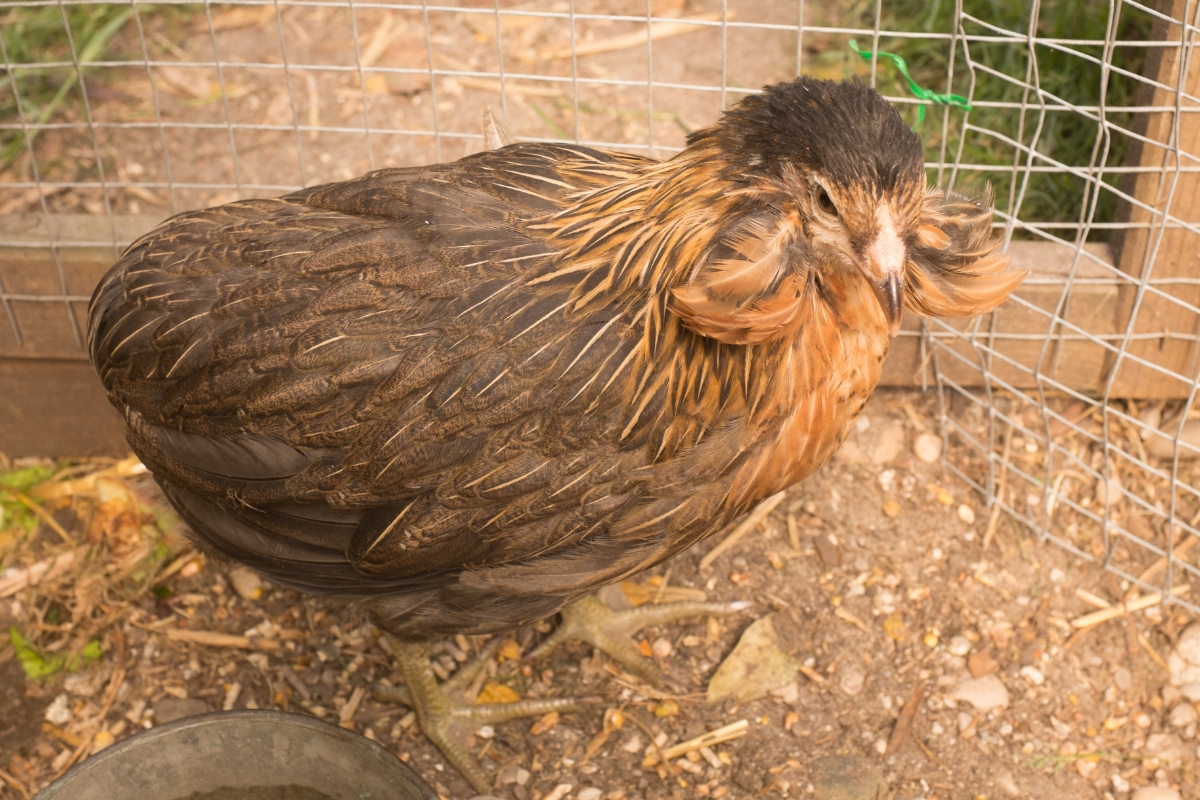
Ayam Cemani
Seeing an Ayam Cemani in your yard might make you do a double-take–is it a chicken or a crow? This gorgeous breed is completely black, both on the outside and inside. Boasting black skin, combs, wattles, plumage, and even organs, the Ayam Cemani is a sight to behold. This is one of the rarest breeds to exist.
Ayam Cemanis is a robust breed and fairly easy to care for, thriving in free range. They are known to be friendly but not overly affectionate. The dark coloration of the Ayam Cemani is a double-edged sword, as it may be easier for predators to spot, but it is also easily mistaken for a crow or raven. These precious birds are definitely conversation starters.
- Breed Name: Ayam Cemani
- Breed Type: All other, ornamental, exhibition
- Size: Hens: 3.5 lbs, roosters: 6.5 lbs
- Temperament: Intelligent, active, friendly
- Eggs per year: 80
- Egg color: Cream
- Hardiness: Heat-tolerant
- Comb type: Single
- Feather type: Hard, clean legs
- Lifespan: 6-8 years
- Time to Maturity: 20-24 weeks

Barbu d’Anvers
An old breed of true bantam, the Barbu d’Anvers is an ornamental breed known for its many colors, fluffy beard and feathered feet. They’re common showbirds that are closely related to several other breeds of Belgian bantams. Barbu d’Anvers have a lot of personality, despite their small size. They’re highly energetic and cheerful, and roosters can be a bit feisty. Barbu d’Anvers are overall a hardy breed, doing well in both heat and cold. They don’t do so well in damp areas because of their feathered feet, so make sure that they have a resting place that’s dry.
- Breed Name: Barbu d’Anvers, (Pronounced bar-BOO dann-VAIR), Antwerp Belgian Bantam
- Breed Type: Ornamental
- Temperament: Energetic, friendly, active. Roosters can be aggressive.
- Size: Hens 1.3 lbs, roosters 1.5 lbs
- Eggs Per Year: 100-150
- Egg Size: Small
- Egg Color: Cream and white
- Feather Type: Hard, with muffs and clean legs
- Comb Type: Rose comb
- Hardiness: Cold hardy, and heat tolerant
- Lifespan: 7-8 years
- Time To Maturity: 19 to 24 Weeks
Belgian D’Uccle
The Belgian d’Uccle is another Belgian bearded bantam. The Belgian d’Uccle is an incredibly beautiful, petite bird, covered head to toe with feathers. They come in seven APA-recognized colors– the best-known variation is the Millefleur variety, French for “thousand flowers”.
They also come in white, porcelain, lavender, mottled, golden neck and black. Outside of breed standards, the Belgian d’Uccle comes in twenty colors! These pretty chickens are known to be outgoing and sweet, forming deep attachments to their owners. Belgian d’Uccles can be rather chatty and will happily talk about their day. Belgian d’Uccles are fairly hardy in all temperatures but can be vulnerable to frostbite in wet areas due to their feathered feet.
- Breed Name: Barbu d’Uccle, Belgian d’Uccle (Pronounced: bar-BOO doo-CLAY)
- Breed Type: Ornamental
- Temperament: Friendly, intelligent, gentle
- Size: Hens 1.3 lbs, Roosters 1.6 lbs
- Eggs Per Year: 100-150
- Egg Size: Small
- Egg Color: Cream
- Feather Type: Hard, with muffs and feathered legs
- Comb Type: Single Comb
- Hardiness: Cold Hardy, and Heat Tolerant
- Lifespan: 7-8 years
- Time To Maturity: 20 to 24 Weeks

Brabanter
With a V-shaped comb, trilobed beard, and funky mohawk, a Brabanter is sure to turn heads. The Brabanter originated in an area between the Netherlands and Belgium, called Brabant, where they were extremely popular chickens for quite a few centuries. They nearly went extinct in the early 1900s and remain rare, but Brabanter lovers are pushing for their return.
Brabanters have a very unique appearance that people love, and their personalities are just as fun. Brabanters are known to be goofy and easygoing. They’re pretty happy anywhere, doing well in confinement and thriving in free-range environments. Brabanters are cold hardy due to their small combs and wattles and will tolerate some heat.
- Breed Name: Brabanter
- Breed Type: All other, ornamental, exhibition
- Size: Hens 5.5 lbs, roosters 6.5 lbs
- Temperament: Curious, affectionate, goofy
- Eggs per year: 150-200
- Egg color: White
- Hardiness: Cold hardy, and heat tolerant
- Comb type: V-comb
- Feather type: Hard, clean legs with crests
- Lifespan: 5-8 years
- Time to Maturity: 24-26 weeks
Crevecoeur
Crevecoeur chickens were once highly popular for their meat, and now they’re treasured as ornamental birds. Crevecoeurs sport a large, floppy crest of glossy black feathers, dark blue legs, and a V-comb, all of which contribute to its very unique appearance.
Crevecoeurs are extremely gentle chickens, to the point that they’re easily bullied. They don’t do very well with aggressive chickens. Their glorious crest can also be an issue, especially in wet environments, so make sure to dry them off to prevent frostbite.
- Breed Name: Crevecoeur (crehve-curr)
- Breed Type: Dual-purpose (meat and eggs), ornamental
- Temperament: Sweet, friendly, calm
- Size: Hens 6.5 lbs, roosters 8 lbs
- Eggs Per Year: 120-150
- Egg Size: Medium
- Egg Color: White
- Feather Type: Hard, clean legs
- Comb Type: V comb
- Hardiness: Cold hardy
- Lifespan: Up to 10 years
- Time To Maturity: 20 weeks
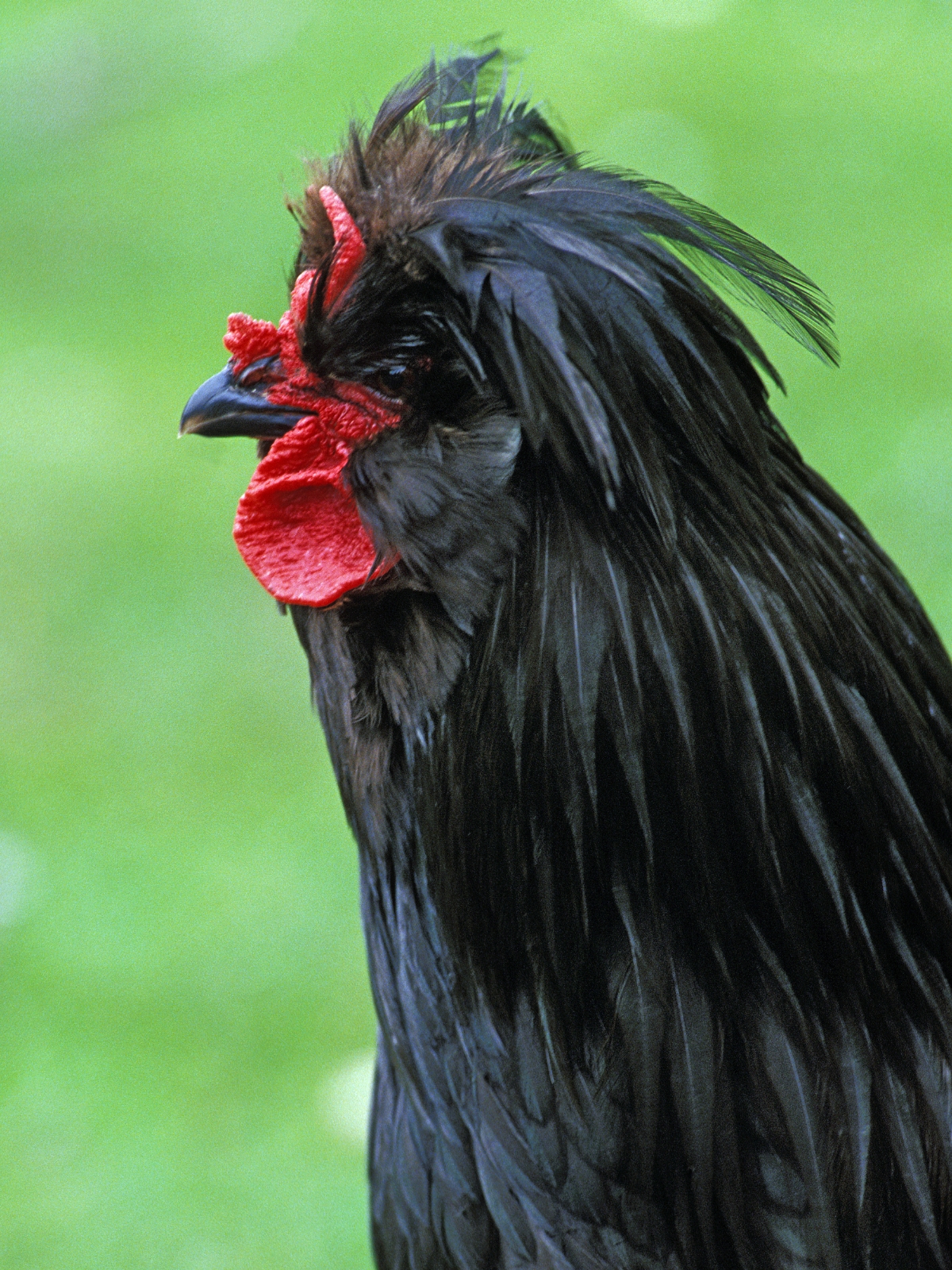
Cubalaya
The Cubalaya is a regal, stately chicken whose ornamental qualities speak for themselves. Originating in Cuba, the Cubalaya is a cross between European game fowl (which have colorful feathers) and Asian game fowl (with long tails). The Cubalaya’s plumage comes in a dazzling array of colors, including black, black-breasted red, gold duckwing, silver duckwing, and blue wheaten.
While they’re certainly beautiful, Cubalayas can be feisty, especially the roosters; they were developed for cockfighting, after all! However, they’re much more tame than others, like the English Game. They need space to thrive and do very well in free range, but they become very unhappy in confinement. Cubalayas are very heat tolerant.
- Breed Name: Cubalaya
- Breed Type: All other, dual-purpose (eggs and meat), exhibition, ornamental
- Temperament: Affectionate, brave, aggressive with other chickens
- Size: Hens 4 lbs, roosters 6 lbs
- Eggs Per Year: 125-175
- Egg Size: Small to medium
- Egg Color: White, cream
- Feather Type: Hard, clean legs
- Comb Type: Pea
- Hardiness: Heat-tolerant
- Lifespan: 8+ years
- Time To Maturity: 24-26 weeks
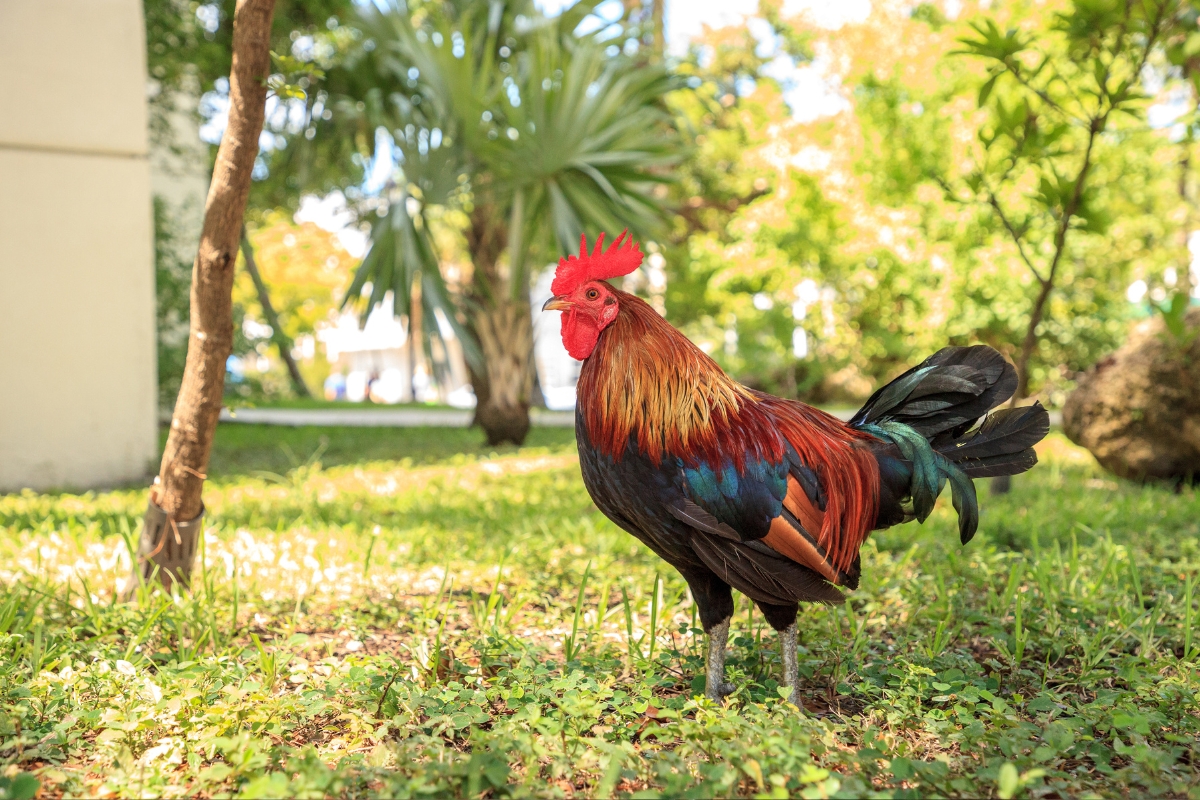
Egyptian Fayoumi
A rare breed with plenty of history and visual appeal, Egyptian Fayoumis have much to offer as an ornamental breed. Egyptian Fayoumis are slender, spritely birds with big, dark eyes. Their heads and necks are silvery white, and their bodies are barred black. Fayoumis originated in Egypt, making them very heat tolerant. They do not like the cold.
In terms of personality, Fayoumis are highly active and adaptable. Their curiosity and independence make them well-suited for free-range, but they tend to dislike confinement. Fayoumis, while pretty, are a look-don’t-touch breed, meaning they like to keep their distance from people. Marvel away!
- Breed Name: Egyptian Fayoumi
- Breed Type: All other, dual-purpose
- Temperament: Loud, flighty, alert
- Size: Hens 4 lbs, roosters 5 lbs
- Eggs Per Year: 150-200
- Egg Size: Small to medium
- Egg Color: White, cream
- Feather Type: Hard, clean legs
- Comb Type: Single
- Hardiness: Heat-tolerant
- Lifespan: 5-8 years
- Time To Maturity: 20-24 weeks
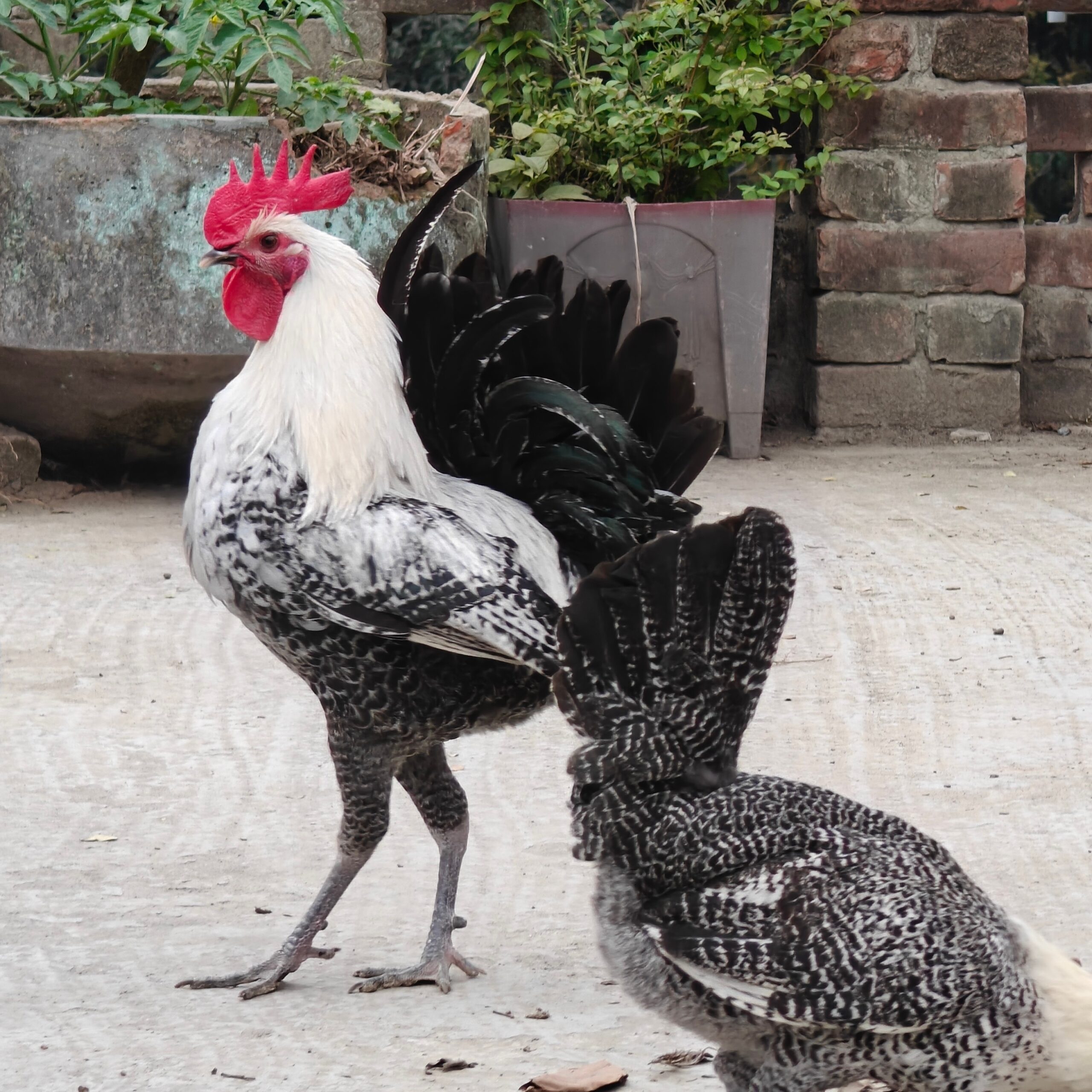
Houdan
The Houdan is a fashionista if there were one in the chicken world. Originating in France, the Houdan was bred to be a table bird. It was brought to the US, where its popularity as a showbird skyrocketed. Nowadays, though, Houdans are a rarity. Dressed in mottled black and white, the Houdan has a crested head adorned with a crown of feathered tufts.
Not only are they pretty, but Houdans are friendly and docile. As chicks, they can be nervous and flighty, but with plenty of handling, they easily become companion animals. Houdans are heat tolerant and cold hardy overall, but in the extreme cold they will need extra care. Otherwise, the Houdan is a breed that’s very easy to care for.
- Breed Name: Houdan
- Breed type: All other ornamental, exhibition
- Temperament: Sweet, gentle, friendly
- Size: Hens 5.5 lbs, roosters 7 lbs
- Eggs Per Year: 150-230
- Egg Size: Medium
- Egg Color: Cream or white
- Feather type: Hard, clean legs with large crest and muffs
- Comb type: V-comb
- Hardiness: Moderately hardy
- Lifespan: Eight years or more
- Time To Maturity: 20 weeks
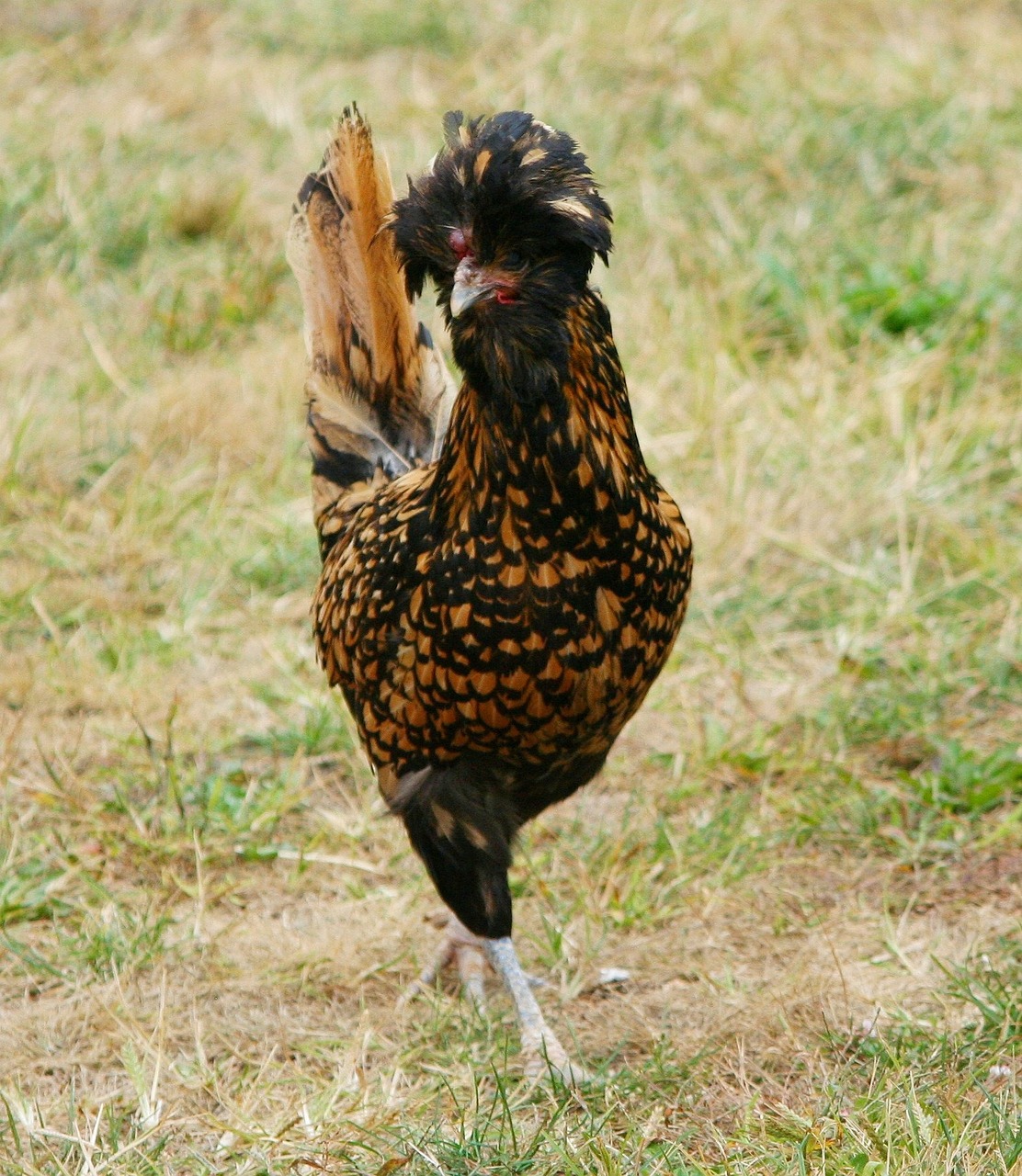
Japanese Bantam
Japanese Bantams come in dozens of varieties, making them versatile ornamental birds. There are forty-two colors that exist! The APA recognizes nine. There are frizzled and silkie-feather varieties, as well. If you’re looking for a flock of chickens that are the same breed but with plenty of variation, Japanese Bantams are the way to go.
Japanese Bantams have short legs, unsurprisingly, as bantam birds. They’re a bit hard to hatch, as they carry the lethal Creeper gene, and many chicks die before they leave the shell. Japanese Bantams are a perfectly friendly and energetic bird that does very well in free range. However, their petite size makes it difficult for them to retain heat, so make sure that they stay warm if you experience cold winters.
- Breed Name: Japanese Bantam, Chabo
- Breed Type: Ornamental, brooder
- Temperament: Curious, active, friendly
- Size: Hens 1.5 lbs, roosters 1.75 lbs
- Eggs Per Year: 60-100
- Egg Size: Small
- Egg Color: White or cream
- Feather Type: Hard, frizzle, or silkie, with clean legs
- Comb Type: Single
- Hardiness: Not hardy
- Lifespan: 8-10 years
- Time To Maturity: 16 to 20 Weeks
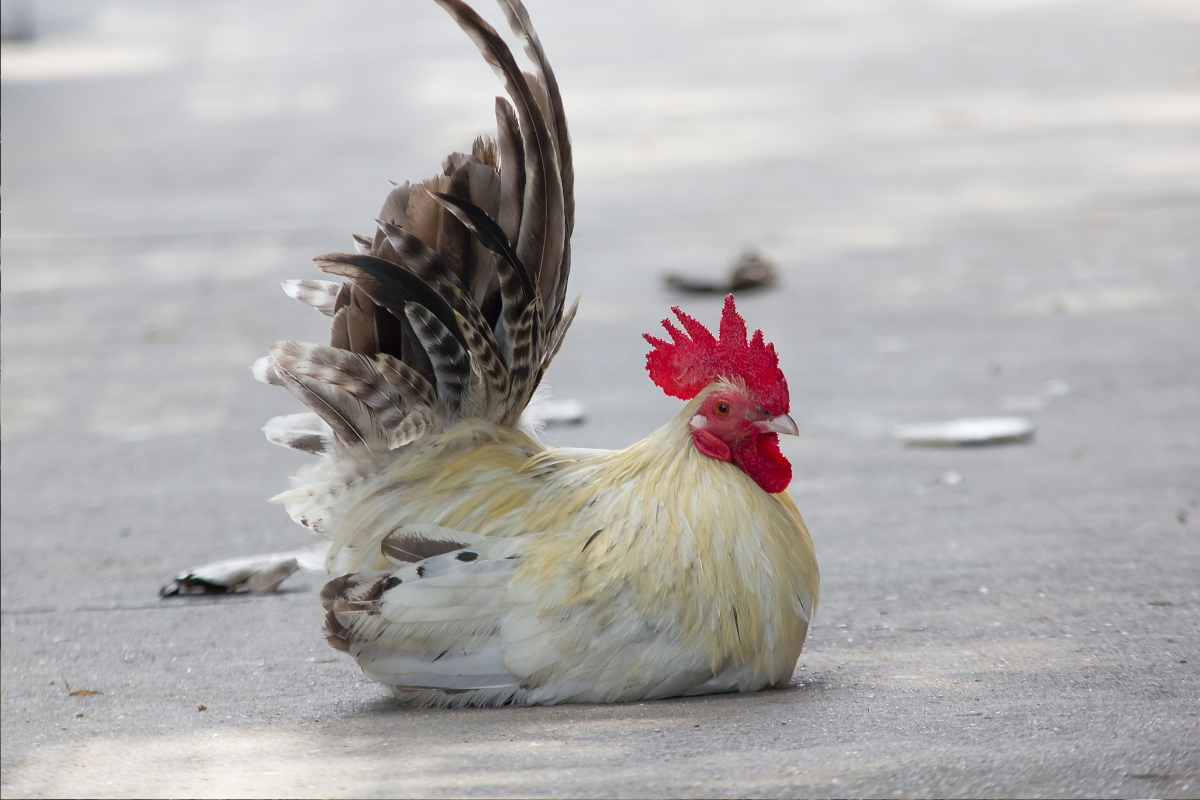
Naked Neck (or Turken)
Naked necks are a very unique-looking breed, known for their trademark lack of feathers on their neck. Naked necks are also known as turkens because of how similar they look to turkeys, although they’re distinctly different birds. Naked necks may not be the prettiest, but they have a cult following!
They’re very charming, friendly birds that love their owners and will shower you with affection. It’s not a surprise that a breed with so few feathers does not enjoy the cold, although they do well in hot climates.
- Breed Name: Transylvanian naked neck, showgirl, turken
- Breed Type: ornamental, dual-purpose (meat and eggs)
- Temperament: Friendly, docile, affectionate
- Size: 7 lbs
- Eggs Per Year: 150-180
- Egg Size: Medium
- Egg Color: Light brown
- Feather Type: Hard, clean legs, no feathers on legs, head, neck, or rump
- Comb Type: Single
- Hardiness: Heat-tolerant
- Lifespan: 8+ years
- Time To Maturity: 20-22 weeks
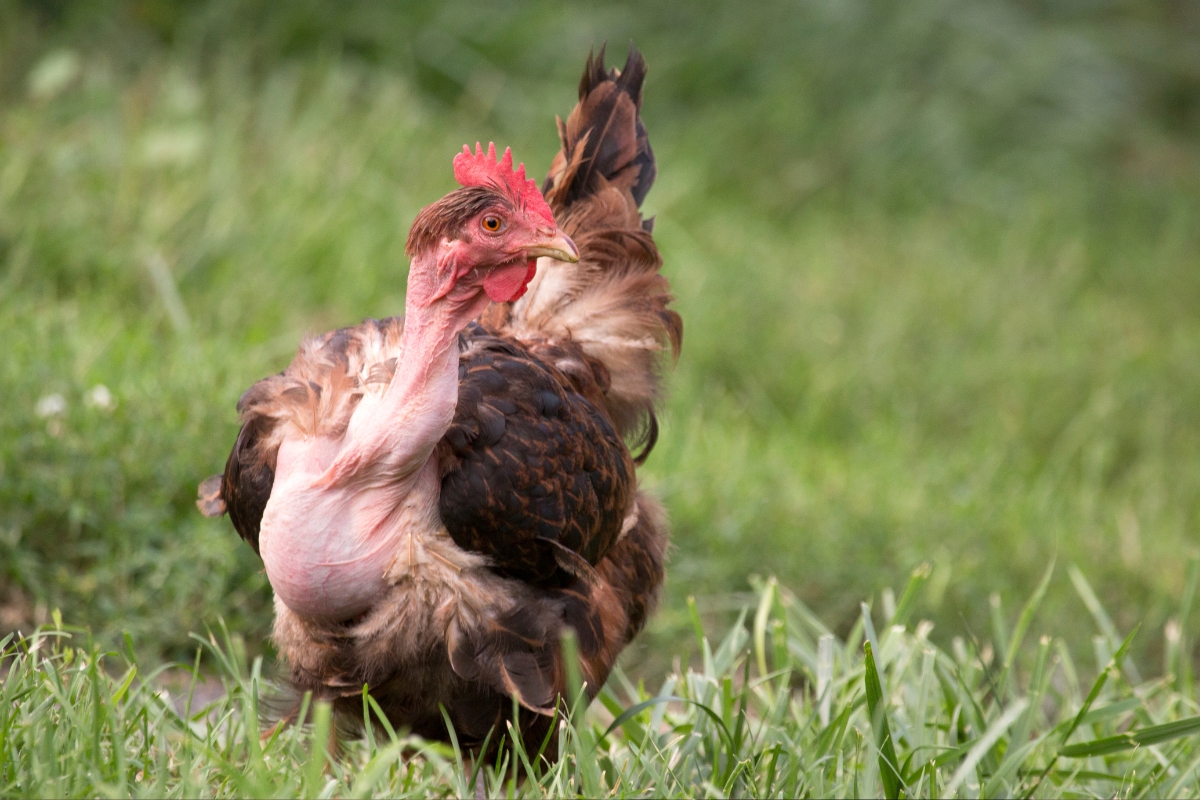
Old English Game Bantam
The Old English Game is known for its regal bearing, upright posture, and ornate plumage–definitely an eye-catching showbird. They exude an air of class and confidence. The feathers of an Old English Game are stunning–they come in a bunch of varieties, like black, brown red, spangled, and more.
Because the Old English Game was bred to be a cockfighting bird, it also has a spirited and feisty nature; while nowadays they’re much tamer, don’t expect them to be cuddly. Old English Game are fighters by nature. These chickens do well in the cold but don’t like the heat. Otherwise, they’re hardy birds that thrive when given plenty of space.
- Breed Name: Old English Game
- Breed Type: Exhibition, ornamental
- Temperament: Active, flighty, standoffish
- Size: Hens 3.5 lbs, roosters 4 lbs
- Eggs Per Year: 160-180
- Egg Size: Medium
- Egg Color: White or cream
- Feather Type: Hard, clean legs
- Comb Type: Single
- Hardiness: Cold hardy
- Lifespan: 15+ years
- Time To Maturity: 24-26 weeks
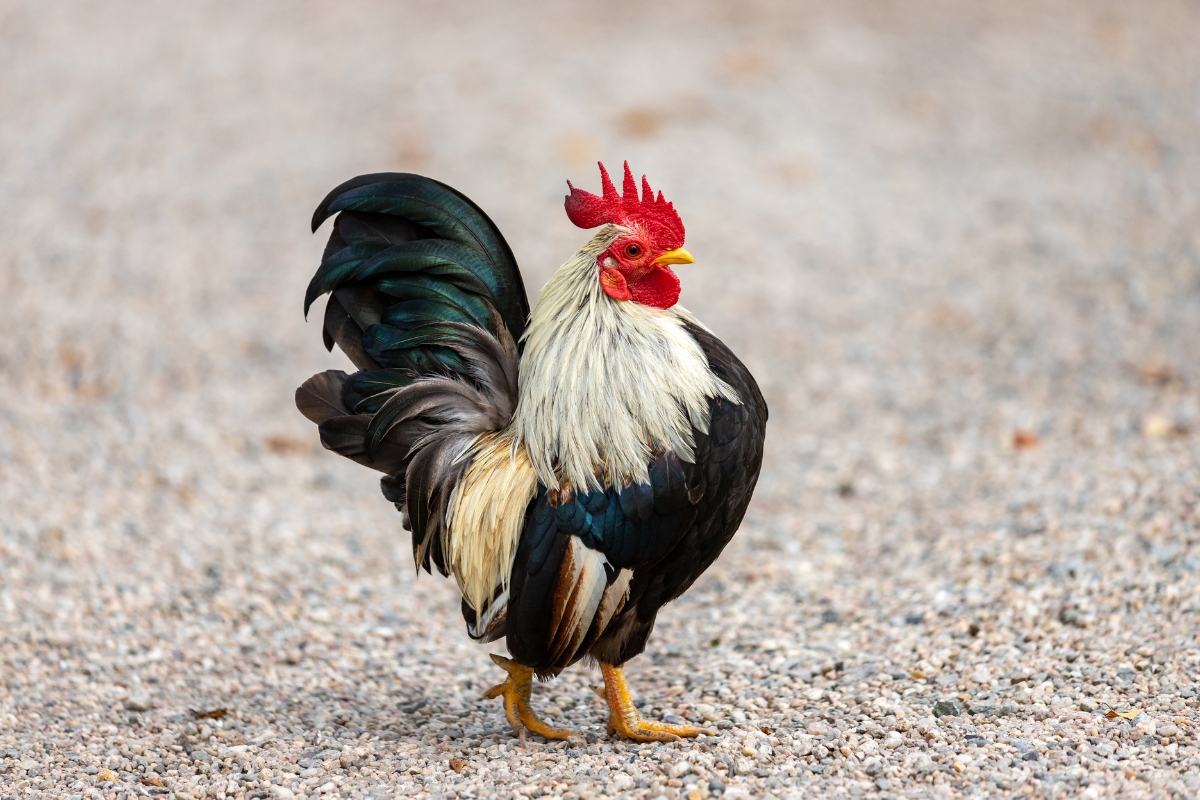
Onagadori
The Onagadori might as well be a work of living art. What sets this breed apart from the rest is its extraordinary tail feathers, which can grow up to four feet or more! These birds are celebrated for their beauty and have been carefully bred for centuries in Japan to retain this amazing trait. They nearly went extinct, and the vast majority of Onagadori that exist live in Japan. With glossy, iridescent plumage that comes in a rainbow of colors and a regal, upright posture, an Onagadori is definitely a breed that will draw anyone’s attention. With such a long tail, Onagadoris need special care.
You’ll need to provide a space that is large enough so the tail won’t get tangled or broken. Their tails can also attract mites and lice easily, so giving your chickens a bit of TLC through grooming will help them a ton. In terms of personality, Onagadori are very intelligent and curious chickens. Onagadori hens are extremely protective of their chicks, so much so that they will sacrifice themselves to save them!
- Breed Name: Onagadori
- Breed Type: Ornamental
- Temperament: Intelligent, protective, active
- Size: Hens 3 lbs, roosters 4 lbs
- Eggs Per Year: 80-100
- Egg Size: Small
- Egg Color: Light brown
- Feather Type: Hard, with clean legs
- Comb Type: Single
- Hardiness: Heat-tolerant
- Lifespan: 6-7 years
- Time To Maturity: 27-30 weeks
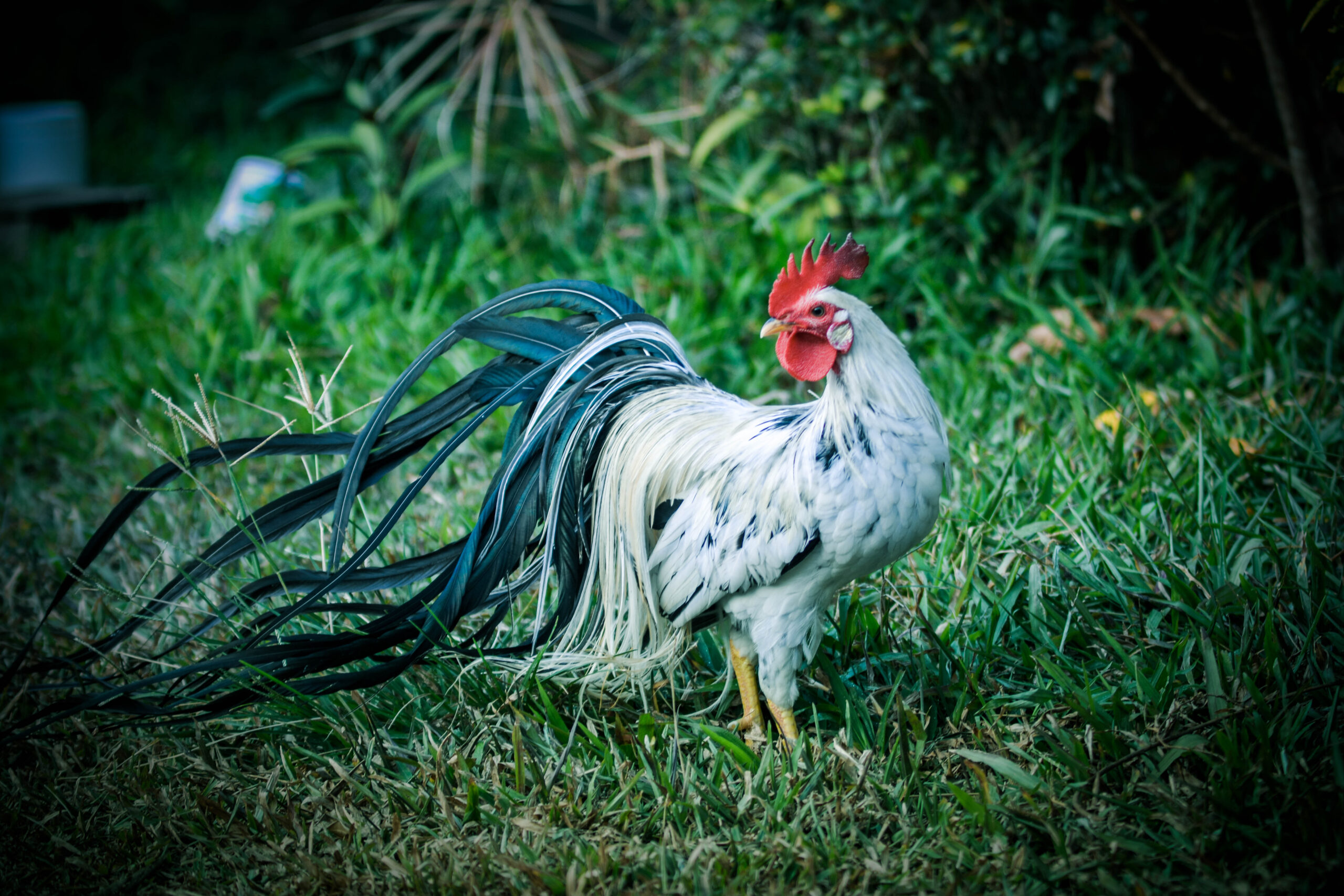
Phoenix
The Phoenix looks strikingly similar to its mythological counterpart. Originating in Japan, these birds have long, flowing tail feathers and vibrant plumage, making them the perfect ornamental chickens if you love pretty breeds. Their tails can grow several feet in length.
They come in a variety of colors, like blue, black, and white; males have exceptionally distinct, multicolored plumage Beyond their aesthetics, Phoenix chickens are known for their outgoing nature. They’re very active and friendly, yet independent. Phoenix chickens have special needs because of their tails. They’re susceptible to parasites, especially mites and lice, so make sure to monitor your flock for these pests.
- Breed Name: Phoenix
- Breed Type: All-other ornamental, exhibition
- Temperament: Active, independent, docile
- Size: Hens 4 lbs, roosters 5.5 lbs
- Eggs Per Year: 50-130
- Egg Size: Small
- Egg Color: White or cream
- Feather Type: Hard, clean legs
- Comb Type: Single
- Hardiness: Heat tolerant and cold hardy
- Lifespan: 7-10 years
- Time To Maturity: 20-22 weeks

Polish
Polish chickens are among the most popular of ornamental breeds, for a lot of reasons. First, their crests are their crowning glory! Their poofy crests are made entirely of feathers. They also come in so many pretty color patterns and varieties. Their feather hats may obscure their vision, which makes Polish chickens easy prey for predators. This is an easy fix–make sure that they can see, and that they have proper shelter.
Regular grooming and cleaning are necessary to maintain their crests in top condition, because their feathers can get matted. Polish chickens are known for their gentle and sociable nature, making them a great choice for people who are willing to put lots of time and care into raising their flock.
- Breed Name: Polish
- Breed Type: Ornamental, exhibition
- Temperament: Active, affectionate, friendly
- Size: Hens 4 lbs, roosters 6 lbs
- Eggs Per Year: 200
- Egg Size: Medium to large
- Egg Color: White
- Feather Type: Hard or frizzle, have long crests
- Comb Type: V comb
- Hardiness: Heat tolerant and cold hardy. Does not like wetness.
- Lifespan: Eight years or more
- Time To Maturity: 18-20 weeks
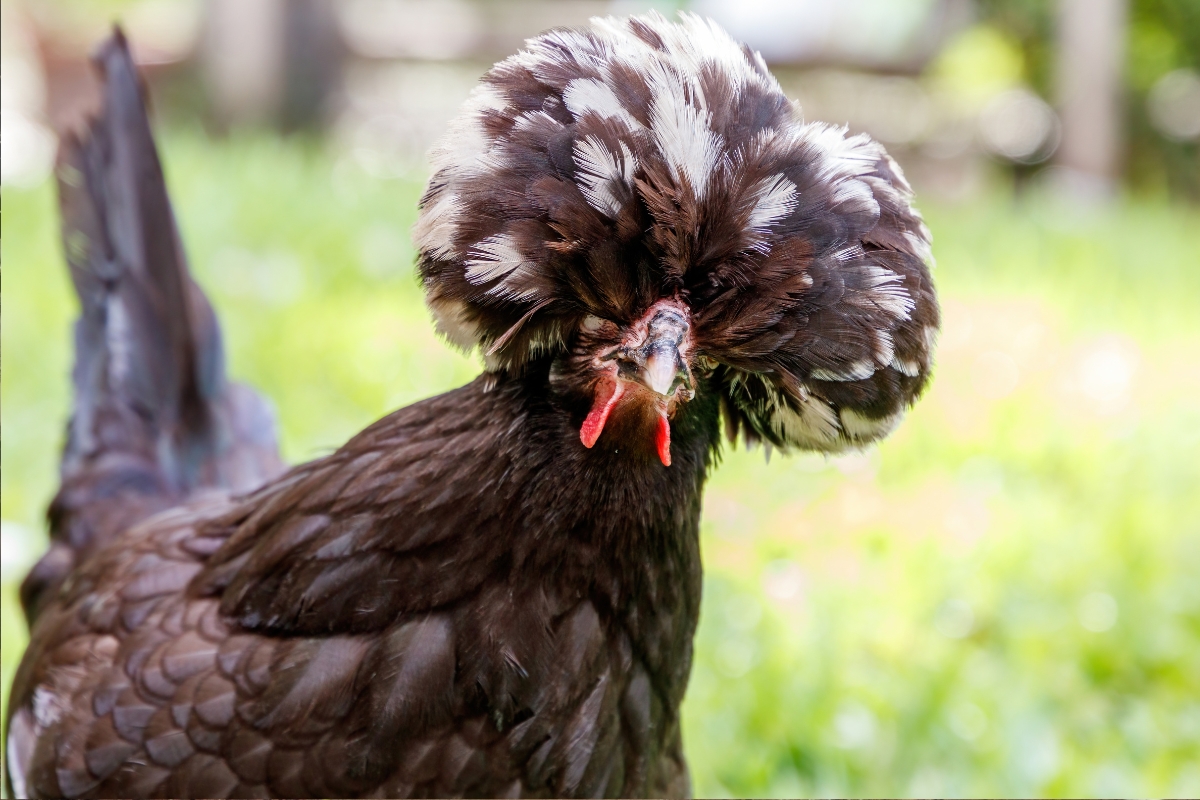
Red Jungle Fowl
If you want a chicken that’s about as wild as they get, consider the Red Jungle Fowl. This exotic breed bears a striking resemblance to its jungle-dwelling ancestors. Their plumage is vibrant, with roosters displaying a breathtaking combination of iridescent colors. Their wild heritage presents some unique concerns. Jungle Fowl are more flighty and skittish than some other breeds, so keeping them in confinement is pretty much impossible.
Providing them with spacious, secure enclosures and ample opportunities to forage and explore can help keep your birds happy. You’ll be rewarded when you see how well they do in free-range. They’re great foragers and very predator-savvy. Because of their wild natures, Jungle Fowl aren’t very affectionate, but they sure are a sight, with plenty of energy and excitement.
- Breed Name: Jungle Fowl
- Breed Type: All other, layer, ornamental
- Temperament: Independent, wary, active
- Size: 4 lbs
- Eggs Per Year: Up to 250
- Egg Size: Medium to large
- Egg Color: White
- Feather Type: Hard, clean legs
- Comb Type: Single
- Hardiness: Very heat tolerant
- Lifespan: 15-20 years
- Time To Maturity: 20-25 weeks
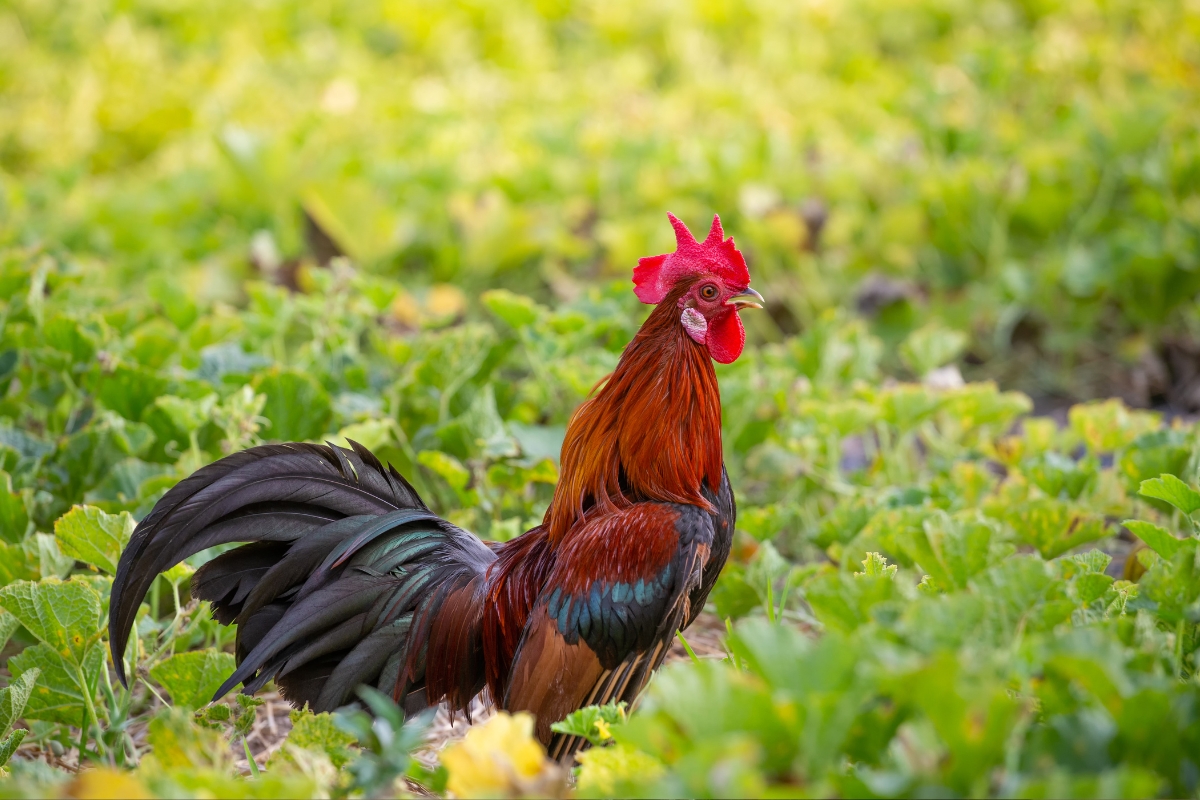
Russian Orloff
The Russian Orloff chicken has a very distinct appearance. They’re tall, heavy birds covered in poofy, mottled feathers. Orloff chickens have very unique skull structures that make them look very serious (or very annoyed). They also sport a walnut comb. Russian Orloffs look like no-nonsense birds, and you might find their personalities to be the same way. They move confidently and slowly. Russian Orloffs are very independent and like to have their own space away from humans.
One of the biggest reasons why people keep Russian Orloffs is their extreme tolerance for the cold. They were developed in Russia to survive the harshest of winters, and their small combs and wattles and fluffy feathers protect them from winter. They don’t like the heat, so consider this bird if you want an ornamental chicken that does well in frosty temperatures.
- Breed Name: Russian Orloff
- Breed Type: Meat, ornamental
- Temperament: Confident, assertive, independent
- Size: hens 6.5 lbs, roosters 8.5 lbs
- Eggs Per Year: 100-180
- Egg Size: Small to medium
- Egg Color: White, cream
- Feather Type: Hard, with beards, muffs and clean legs
- Comb Type: Cushion (mix of pea and rose)
- Hardiness: Very cold hardy
- Lifespan: 6-8 years
- Time To Maturity: 26-30 weeks
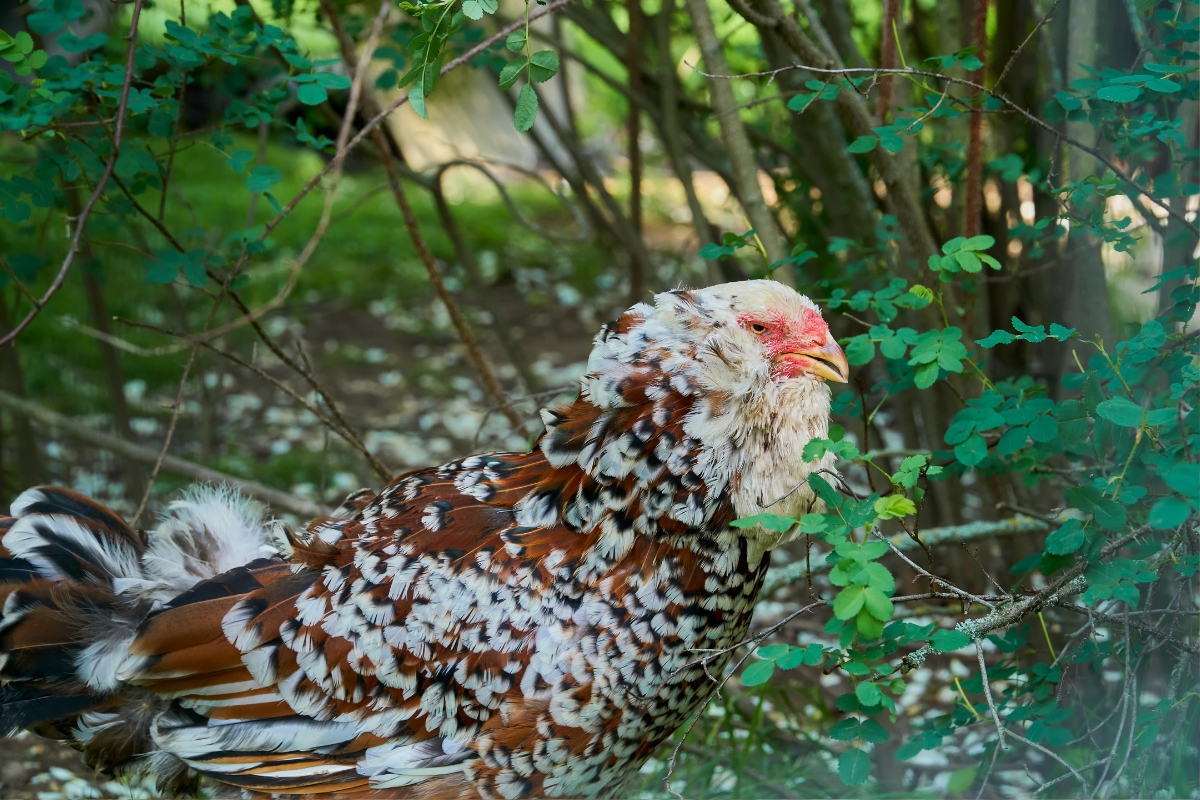
Serama
The Serama is the smallest breed of domesticated chicken, with the smallest being under 8 ounces in weight! Their tiny size is just one of the reasons why they make such interesting ornamental chickens. They have very geometric bodies, bred specifically to look like a soldier standing at attention with their arms at their sides.
Seramas are overall very hardy birds that are tolerant of the heat, and they don’t have many health concerns other than their size–they’re easy pickings for airborne predators. Seramas put a lot of personality into such a tiny package, and they’re friendly as can be! You won’t be disappointed with this cute, cuddly bird.
- Breed Name: Malaysian Serama
- Breed Type: All other, ornamental, exhibition
- Temperament: Confident, affectionate, friendly
- Size: Micro roosters are up to 13 oz; micro hens up to 8 oz; Class A roosters are under 13 oz; Class A hens under 12 oz; Class B roosters under 16 oz; Class B hens under 15 oz; Class C roosters under 19 oz and hens under 19 oz.
- Eggs Per Year: 180-200
- Egg Size: Tiny
- Egg Color: White
- Feather Type: Hard, feather-legged
- Comb Type: Single
- Hardiness: Heat-tolerant
- Lifespan: 7-10 years
- Time To Maturity: 15-18 weeks
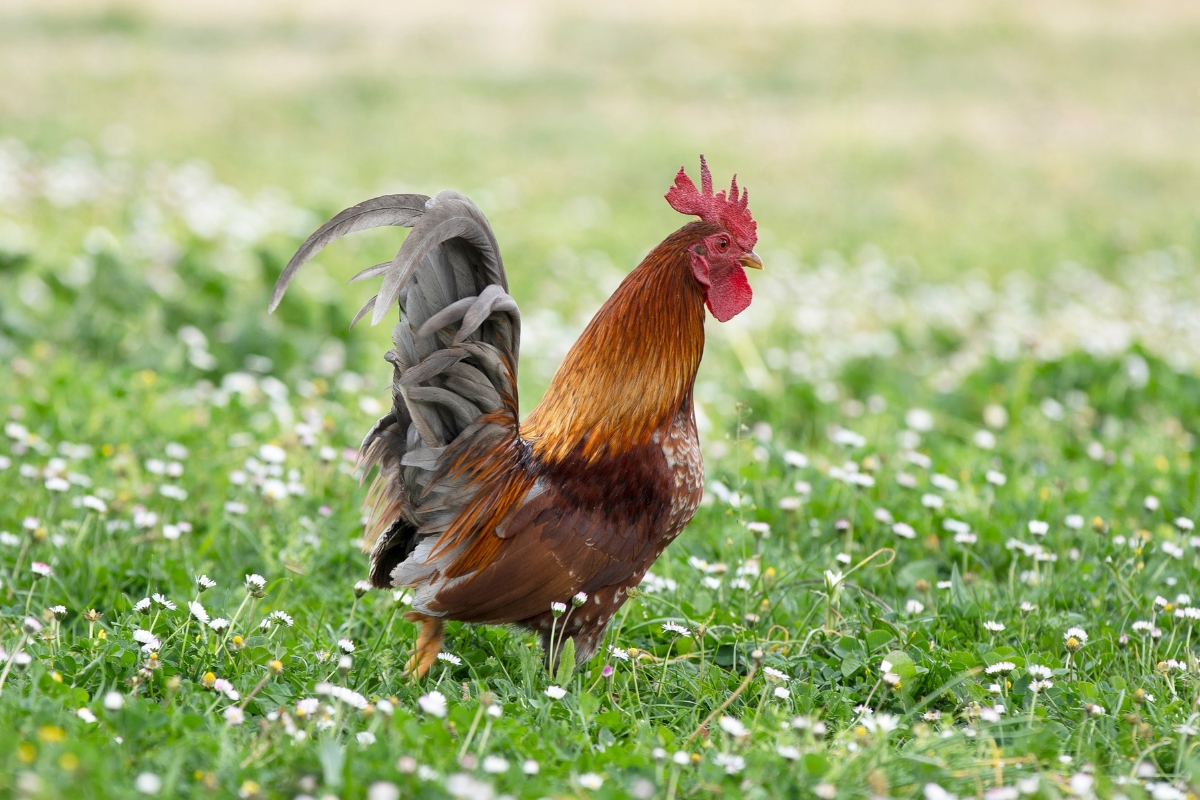
Shamo
Shamo chickens used to be the protein of choice for sumo wrestlers looking to gain strength. Looking at this bird, it’s not a surprise why. The Shamo is a tall, lean, muscular bird. It looks almost serpentine, with a snaking neck and long legs.
Shamo were once used for cockfighting, and this fire is still in its blood–they are aggressive and tough birds that won’t take being pushed around. Shamo chickens are very hardy and do well in the heat, but they don’t like cold weather. There aren’t many concerns with this ornamental breed, just make sure that you don’t have more than one or two of the same sex in your flock, because they might end up fighting.
- Breed Name: Shamo
- Breed Type: Meat, ornamental
- Temperament: Active, aggressive, tough
- Size: Hens 7 lbs, roosters 11 lbs
- Eggs Per Year: 90
- Egg Size: Medium
- Egg Color: Tinted or light brown
- Feather Type: Hard, clean legs
- Comb Type: Pea comb
- Hardiness: Heat-tolerant
- Lifespan: 6-7 years
- Time To Maturity: 22-28 weeks
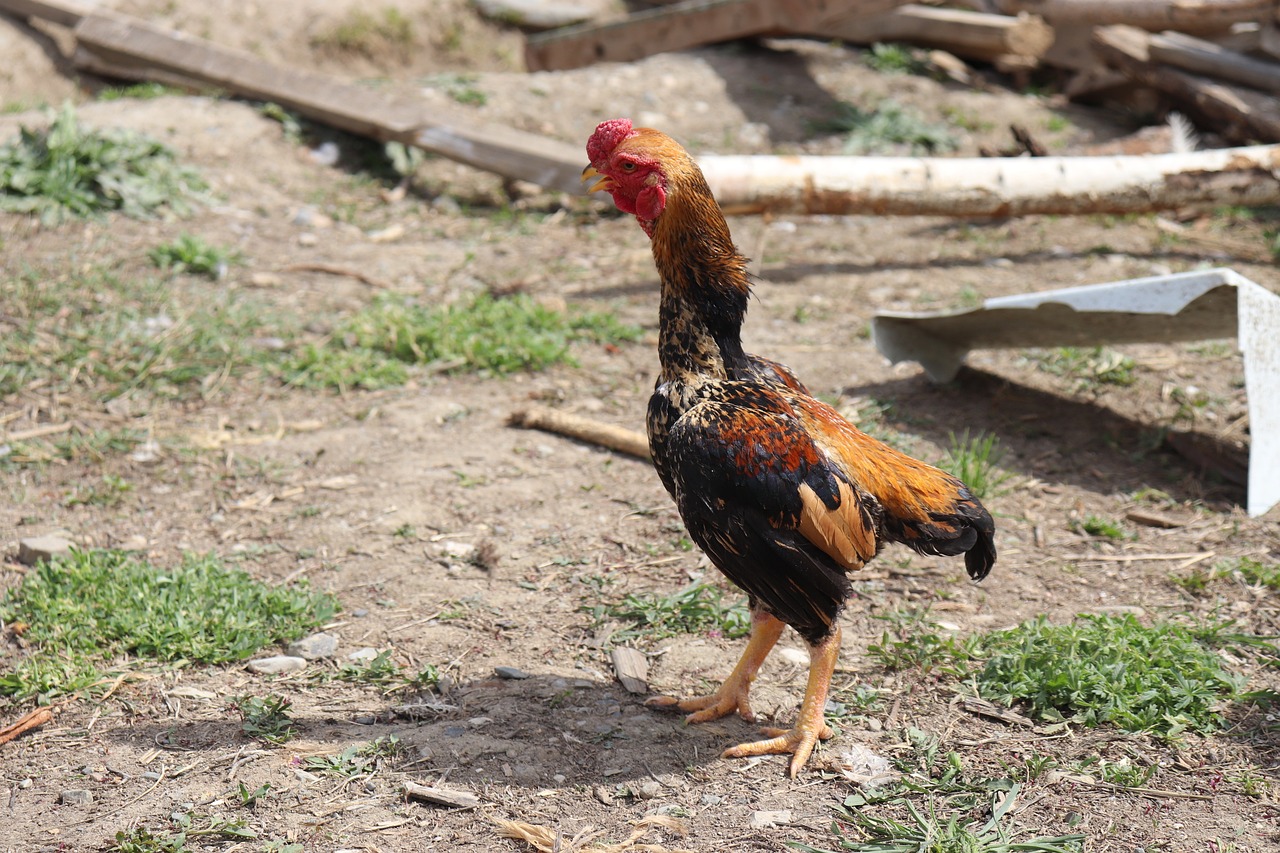
Sicilian Buttercup
The calling card of the Sicilian Buttercup is its special comb, which is shaped like a flower. No other chicken breed has a buttercup comb, which looks almost like a crown. These combs allow the Sicilian Buttercup to thrive in hot climates–they are from Sicily, after all.
They’re prone to frostbite in the cold, though, and their small bodies aren’t good at retaining heat. Sicilian Buttercups are very dainty and spritely in appearance, with golden mottled feathers. Sicilian Buttercups are wonderfully active, as well, and while they’re naturally a bit flighty, they can make great companions.
- Breed Name: Sicilian Buttercup
- Breed Type: Mediterranean, layer, ornamental
- Temperament: Active, alert, flighty
- Size: Hens 5 lbs, roosters 6.5 lbs
- Eggs Per Year: 150-180
- Egg Size: Small to medium
- Egg Color: White
- Feather Type: Hard, clean legs
- Comb Type: Buttercup
- Hardiness: Heat-tolerant
- Lifespan: 5-8 years
- Time To Maturity: 20-30 weeks
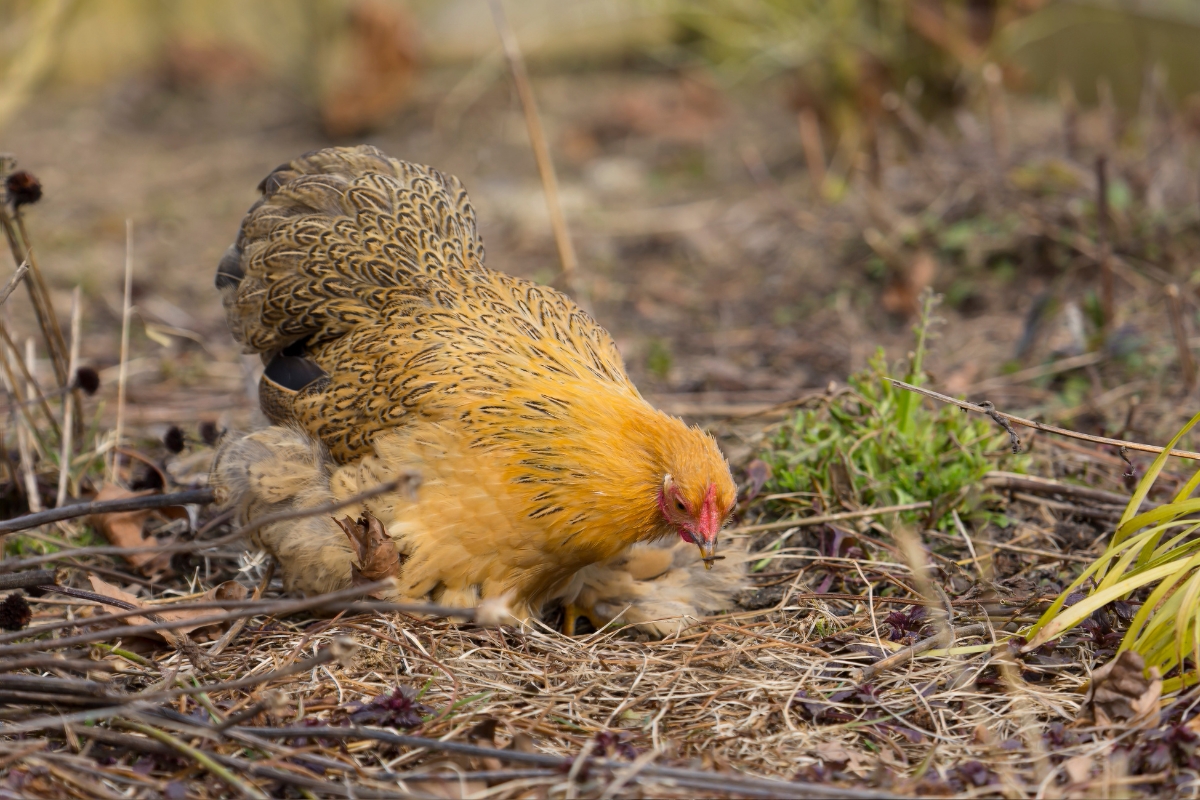
Silkie
Perhaps the most popular type of ornamental chicken, the Silkie is immediately recognizable. They have soft, fluffy feathers that don’t have the hard, shiny appearance of those of other birds; they lack the special barbs that hold the feathers together. They’re perfectly cloud-like and soft. Besides their namesake feathers, Silkies are unique for their pigmentation. Their skin, muscles, and even bones are black!
They’re valued in Chinese medicine for their mystical healing properties and eaten as a delicacy. Silkies are just as soft in personality as they are in appearance. A Silkie will follow you like a puppy and love you forever! With such great fluff comes great responsibility.
Silkie owners should be aware that they are not hardy because of how delicate their feathers are, so they need plenty of shelter and warmth. Their head poofs can also obstruct their vision. Caring for a Silkie is a labor of love, and you’ll definitely be rewarded when you see how much your chicken adores you.
- Breed Name: Silkie
- Breed Type: Asiatic, ornamental, exhibition
- Temperament: Cuddly, loving, affectionate
- Size: Large rooster 4 lbs, large hen 3 lbs; bantam rooster 1.5 lbs, bantam hen 1 lb
- Eggs Per Year: 100
- Egg Size: Small to medium
- Egg Color: Cream or white
- Feather Type: Silkie down, feather-legged
- Comb Type: Walnut
- Hardiness: Not hardy
- Lifespan: 7-9 years
- Time To Maturity: 8-12 months
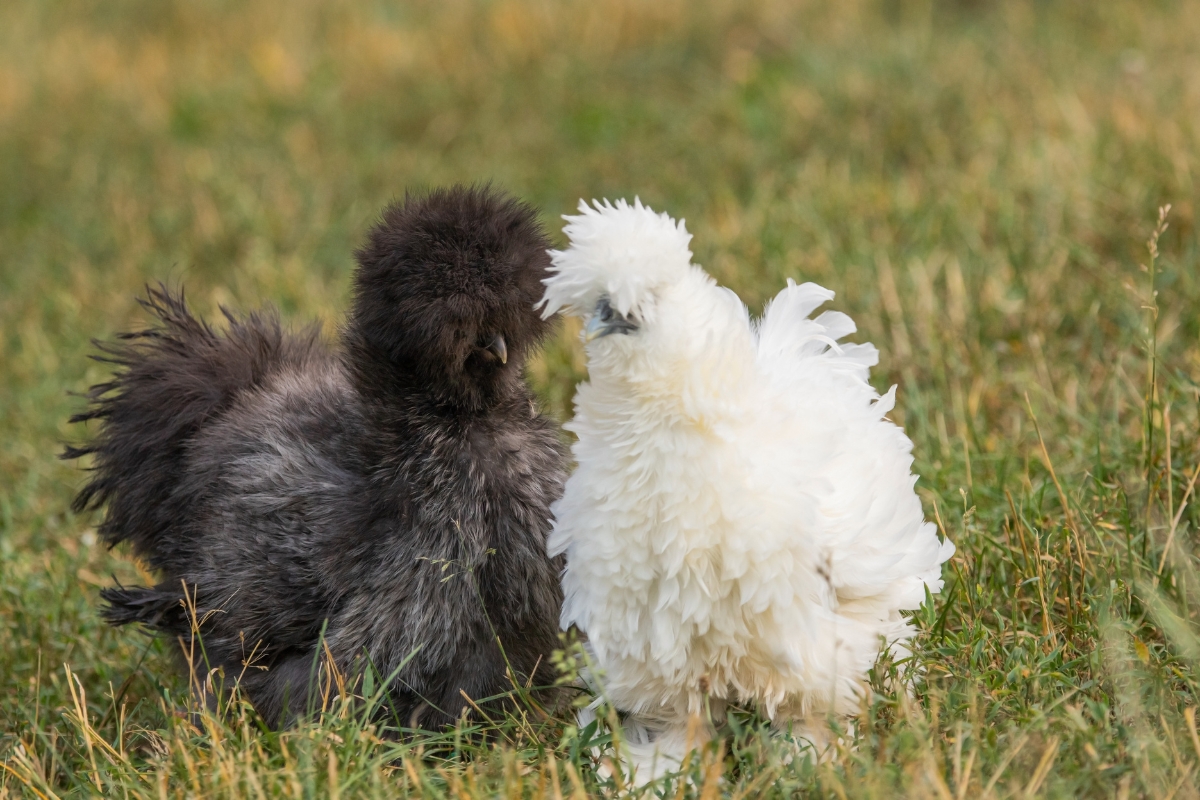
Sultan
The Sultan has an illustrious history dating back to the Ottoman Empire, and they certainly look like royal birds. Sultans have an abundance of silky, white plumage, a poofy crest of feathers, and a beard. Special care concerns for Sultan chickens are all about their feathers.
They can become soiled and prone to matting, so regular grooming and cleaning is necessary to keep them looking their best. Additionally, their fluffy plumage can make them more susceptible to extreme temperatures. Sultan chickens are loved for their gentle and docile personalities, making them a great addition to your ornamental flock.
- Breed Name: Sultan
- Breed Type: All other, ornamental, exhibition
- Temperament: Gentle, docile, affectionate
- Size: Rooster 6 lbs, hen 4 lbs
- Eggs Per Year: 50
- Egg Size: Medium to large
- Egg Color: Light brown
- Feather Type: Hard, muffs, feather-legged
- Comb Type: V-comb
- Hardiness: Heat-tolerant
- Lifespan: Five to eight years
- Time To Maturity: 20-22 weeks
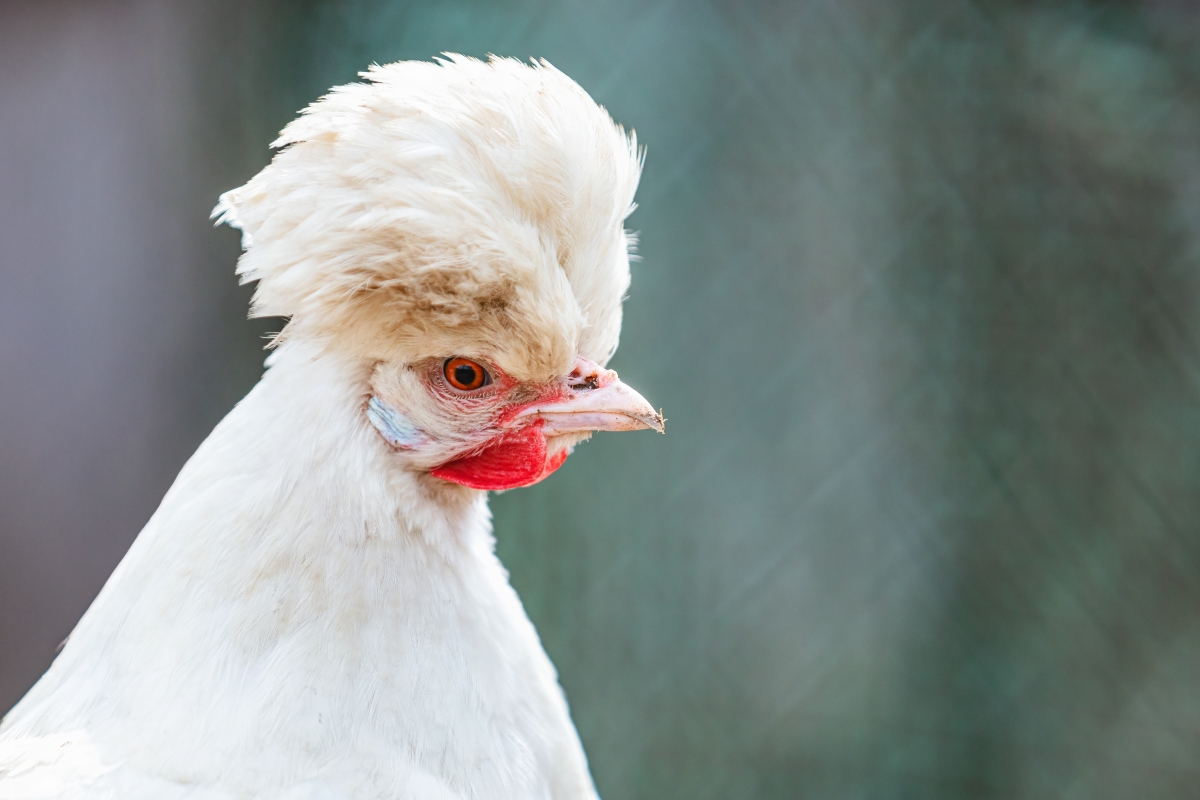
Sumatra
A Sumatra chicken is pure, dark elegance. They have iridescent feathers and black skin–they’re absolutely stunning, especially in the sunshine. Sumatras are very independent and are excellent fliers, so they do best in free-range in a covered area.
Having originated in Indonesia, Sumatras are heat-tolerant, but due to their small combs and wattles, they are also susceptible to frostbite in colder climates. Sumatras are a great choice for you if you want a chicken that is confident and eye-catching but not needy.
- Breed Name: Sumatra
- Breed Type: Ornamental
- Temperament: Proud, active, independent
- Size: Hens 4 lbs, roosters 5 lbs
- Eggs Per Year: 100
- Egg Size: Small
- Egg Color: White
- Feather Type: Hard, clean legs
- Comb Type: Pea
- Hardiness: Very heat tolerant
- Lifespan: 6-8 years
- Time To Maturity: 30-35 weeks
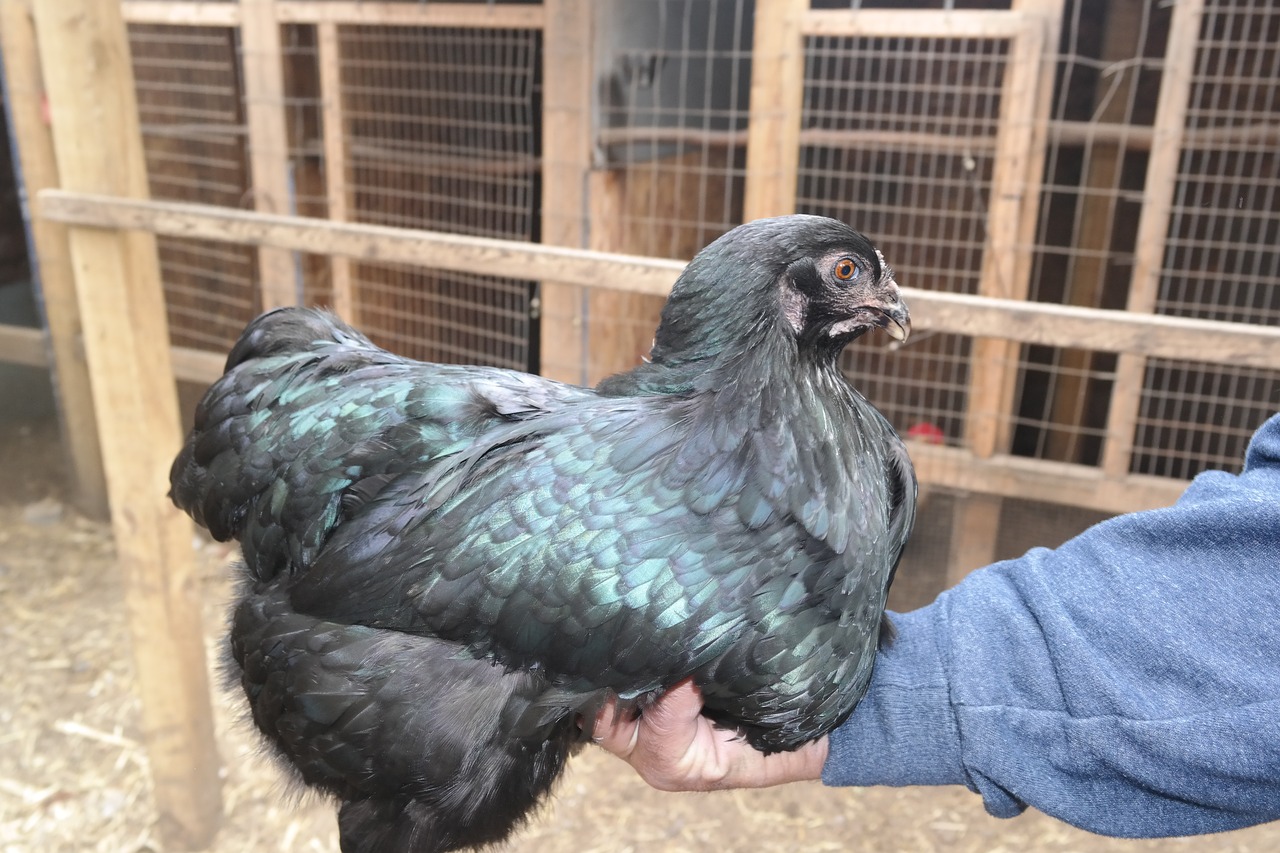
Thuringian
Thuringian chickens are a very rare breed that originated in Germany. They come in many colors, including White, Yellow, Silver Spangled, Chamois Spangle, Black, Cuckoo, and more. They are very sturdy, strong-looking chickens built for the cold, with heavy beards.
Thuringian chickens are friendly, and they really like their owners! Because they’re more accustomed to the cold, you would need to provide them with plenty of shelter and shade in the cooler months. Other than that, Thuringians are hardy and are great foragers.
- Breed Name: Thuringian
- Breed Type: Exhibition, ornamental
- Temperament: Friendly, docile
- Size: Hens 4 lbs, roosters 5.5 lbs
- Eggs Per Year: 140-180
- Egg Size: Medium
- Egg Color: White
- Feather Type: Hard, with beards, muffs, and clean legs
- Comb Type: Single
- Hardiness: Cold hardy
- Lifespan: Up to 10 years
- Time To Maturity: 20-25 weeks
Tomaru
The Tomaru is a beautiful, elegant bird, but what makes it stand out from the rest is its ability to crow–they have the longest cry of any chicken, with the longest being 25 seconds long! Needless to say, the Tomaru is pretty chatty. It’s very active, lively, and intelligent.
Tomaru were developed in Japan, and they’re very rare in the US. Overall, the Tomaru is a hardy bird without many health concerns. Tomaru needs plenty of space to feel and look their best, and they do best in free-range environments.
- Breed Name: Tomaru
- Breed Type: Ornamental
- Temperament: Active, curious, lively
- Size: Hens 4.5 lbs, roosters 6.5 lbs
- Eggs Per Year: 100
- Egg Size: Medium
- Egg Color: White or cream
- Feather Type: Hard, clean legs
- Comb Type: Single
- Hardiness: Cold hardy and heat tolerant
- Lifespan: 5-8 years
- Time To Maturity: 20-22 weeks
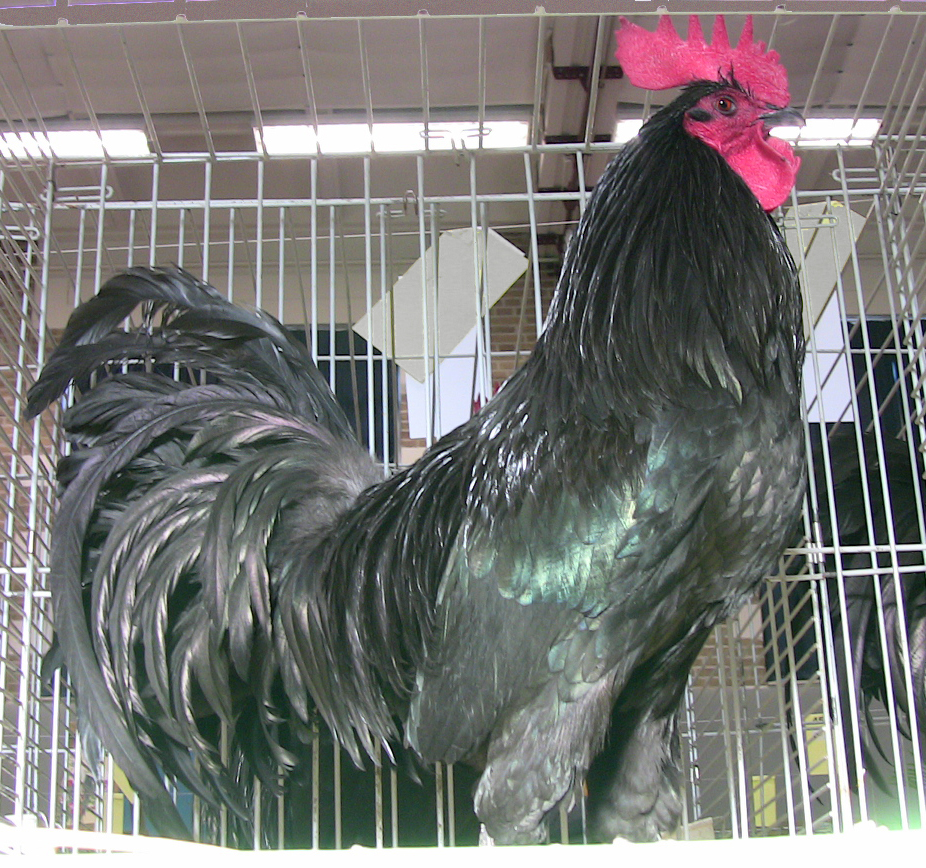
White Faced Black Spanish
The White-Faced Black Spanish chicken is also known as the clown chicken, and once you take a good look at their face, it’s easy to see why. They have a striking contrast of black feathers and a brilliant white face, framed with a bright red comb, wattles, and earlobes.
As a Mediterranean breed, the White Faced Black Spanish thrives in the heat, but doesn’t do so well in the cold because of how large their combs and wattles are. White Faced Black Spanish chickens have a very flighty and loud personality, and they’re quite chatty with their owners. They aren’t very affectionate but have plenty of interest in what you’re up to.
- Breed Name: White-faced Black Spanish, Cara Blanca, Española Cara Blanca
- Breed Type: Mediterranean, dual-purpose (meat and eggs)
- Temperament: Loud, active, independent
- Size: Hens: 6.5 lbs
- roosters: 8 lbs
- Eggs Per Year: 160-180
- Egg Size: Large
- Egg Color: White
- Feather Type: Hard, clean legs
- Comb Type: Single
- Hardiness: Heat-tolerant
- Lifespan: Up to 10 years
- Time To Maturity: 20-22 weeks
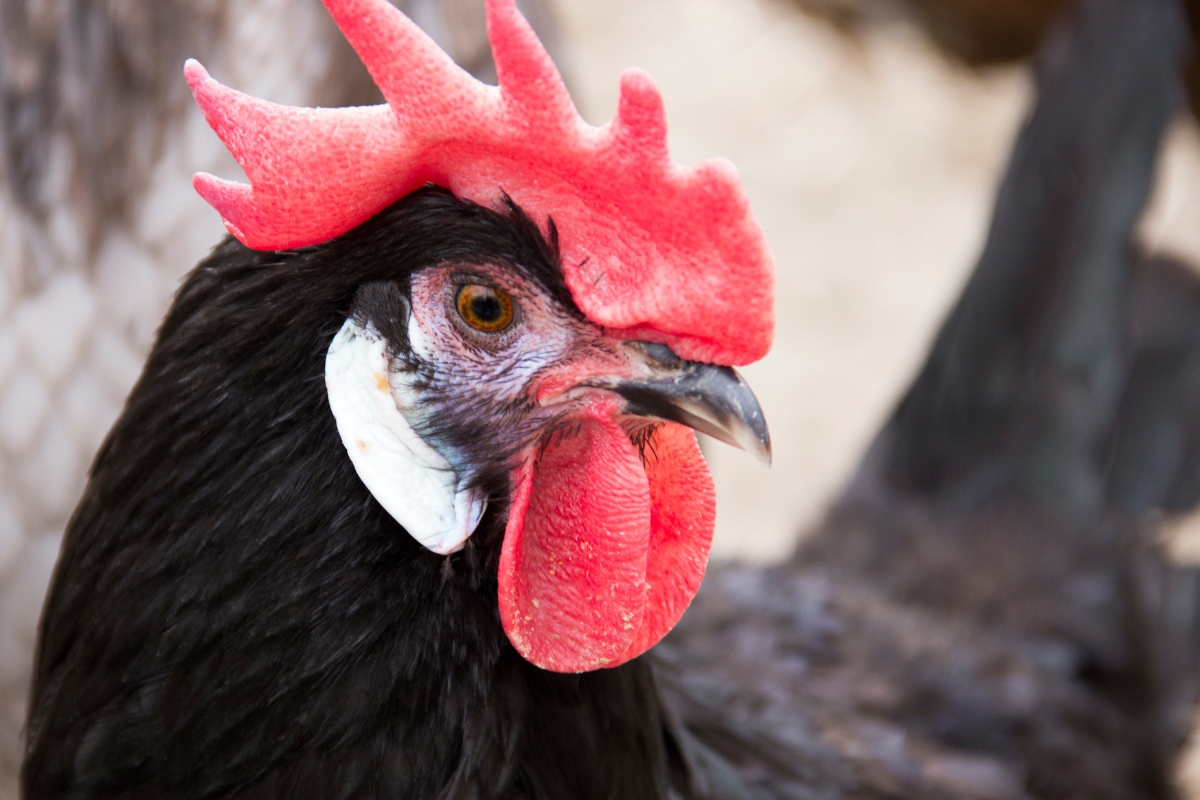
Yokohama
Yokohama chickens are another a gorgeous ornamental breed that is was developed in Germany, despite what the name might suggest. What makes Yokohamas so sought-after is their stately appearance–they have long, elegant bodies and a lengthy tail.
With any breed that has long feathers, you should look out for mites and make sure that their resting spaces don’t have anything that can snag. Yokohamas are a breed that needs a lot of space, not only for their tails, but also because of how active they are. These curious, lively birds love to explore, and they’re happiest in free-range environments.
- Breed Name: Yokohama
- Breed Type: Exhibition, Ornamental
- Temperament: Active, lively, curious
- Size: Hens 3.5 lbs, roosters 5.25 lbs
- Eggs Per Year: 60-80
- Egg Size: Medium
- Egg Color: White or cream
- Feather Type: Hard, clean legs
- Comb Type: Single
- Hardiness: Cold hardy, and heat tolerant
- Lifespan: 6-8 years
- Time To Maturity: 22-24 weeks
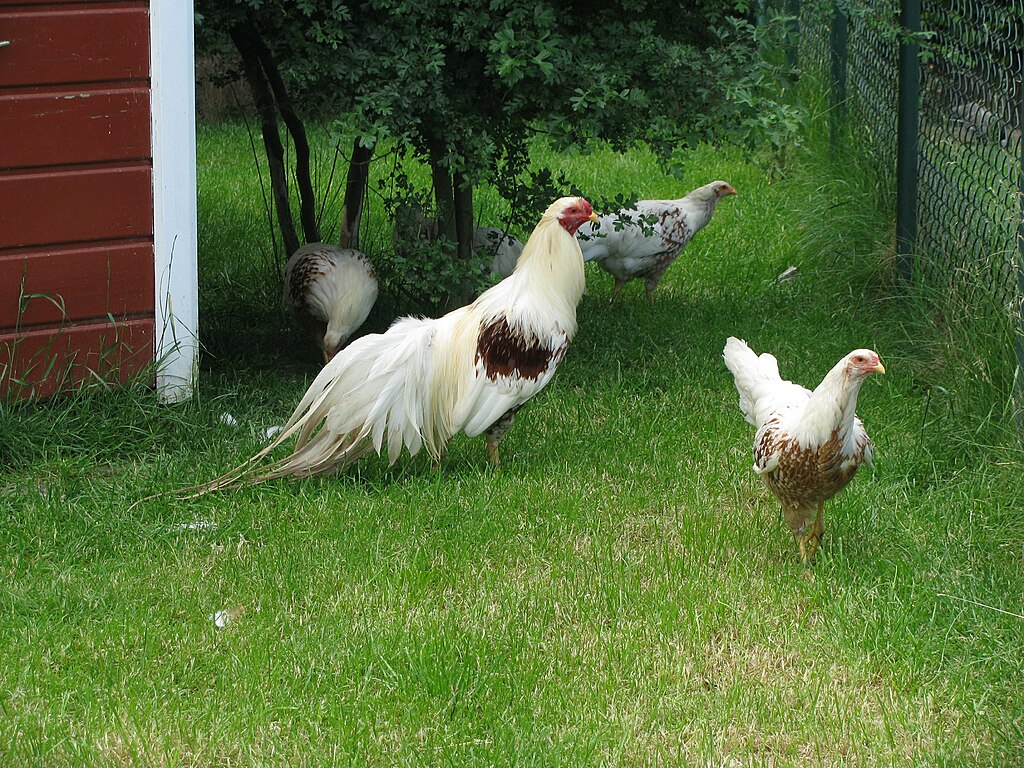
Chicken Breed Guides
Looking for more chicken breed guides?
- Best Egg Laying Chickens Breeds for Beginners
- Chickens that Lay Colorful Eggs
- Cold Hardy Chicken Breeds
- Fluffy Chicken Breeds
- Best Broody Chicken Breeds for a Self-Maintaining Flock
- Chickens That Lay the Most Eggs
- Best Dual Purpose Chicken Breeds
